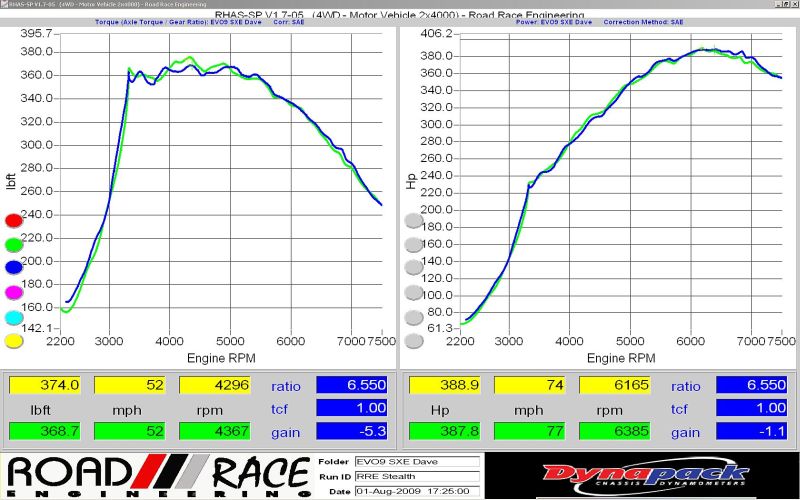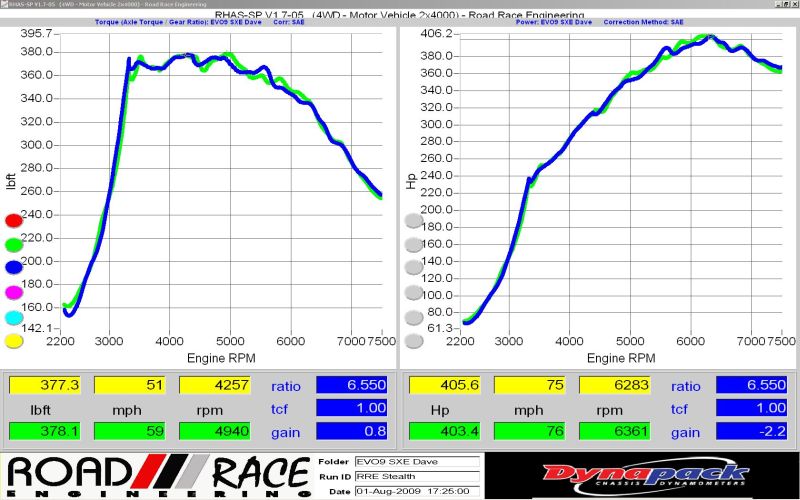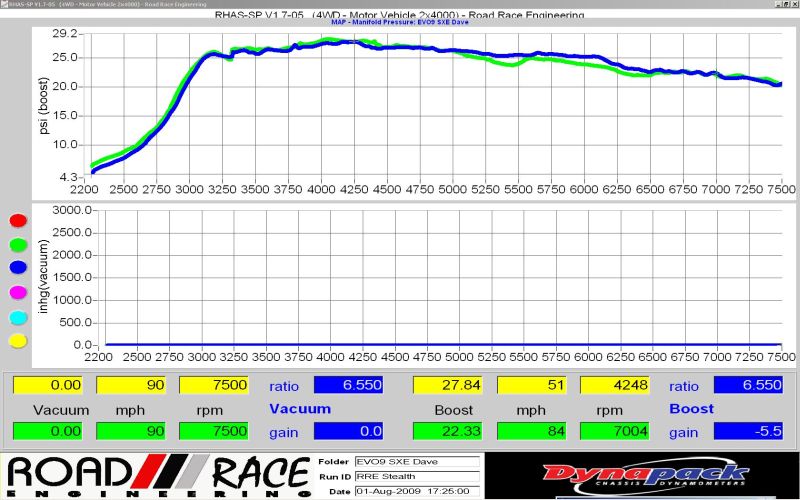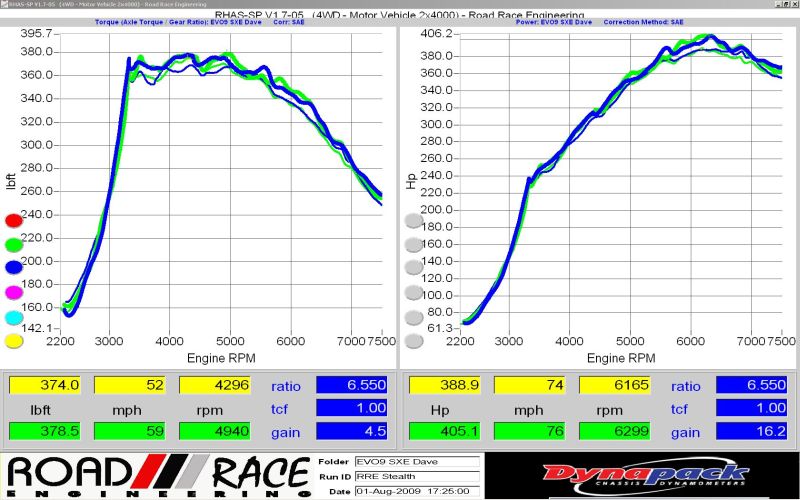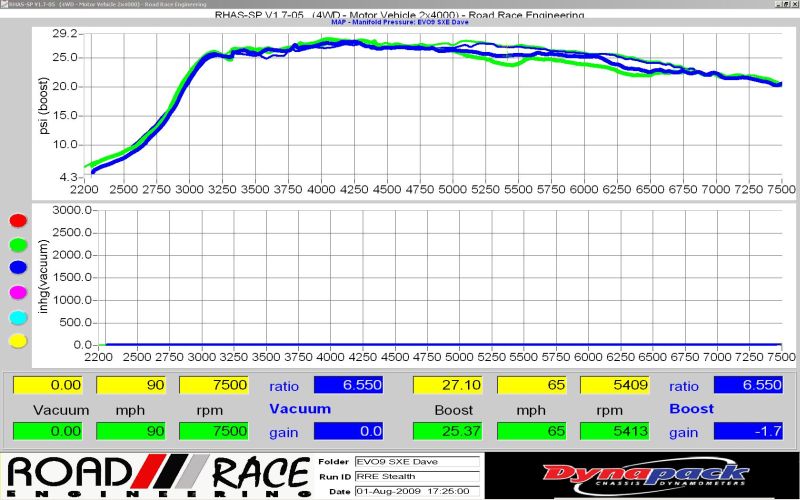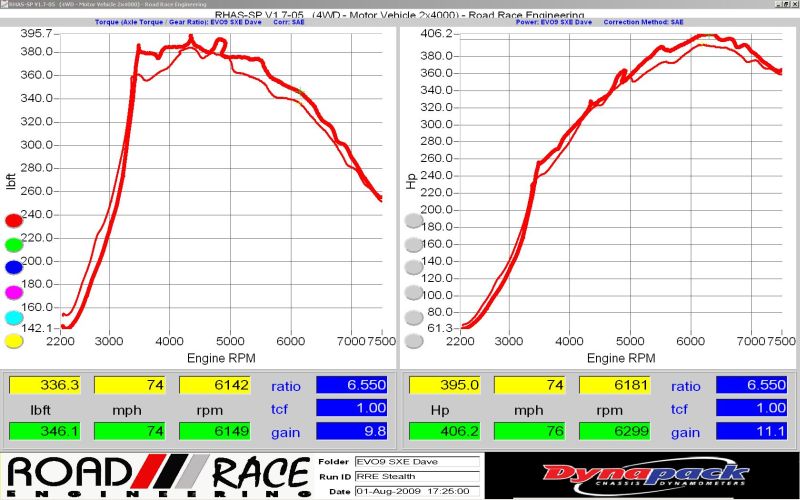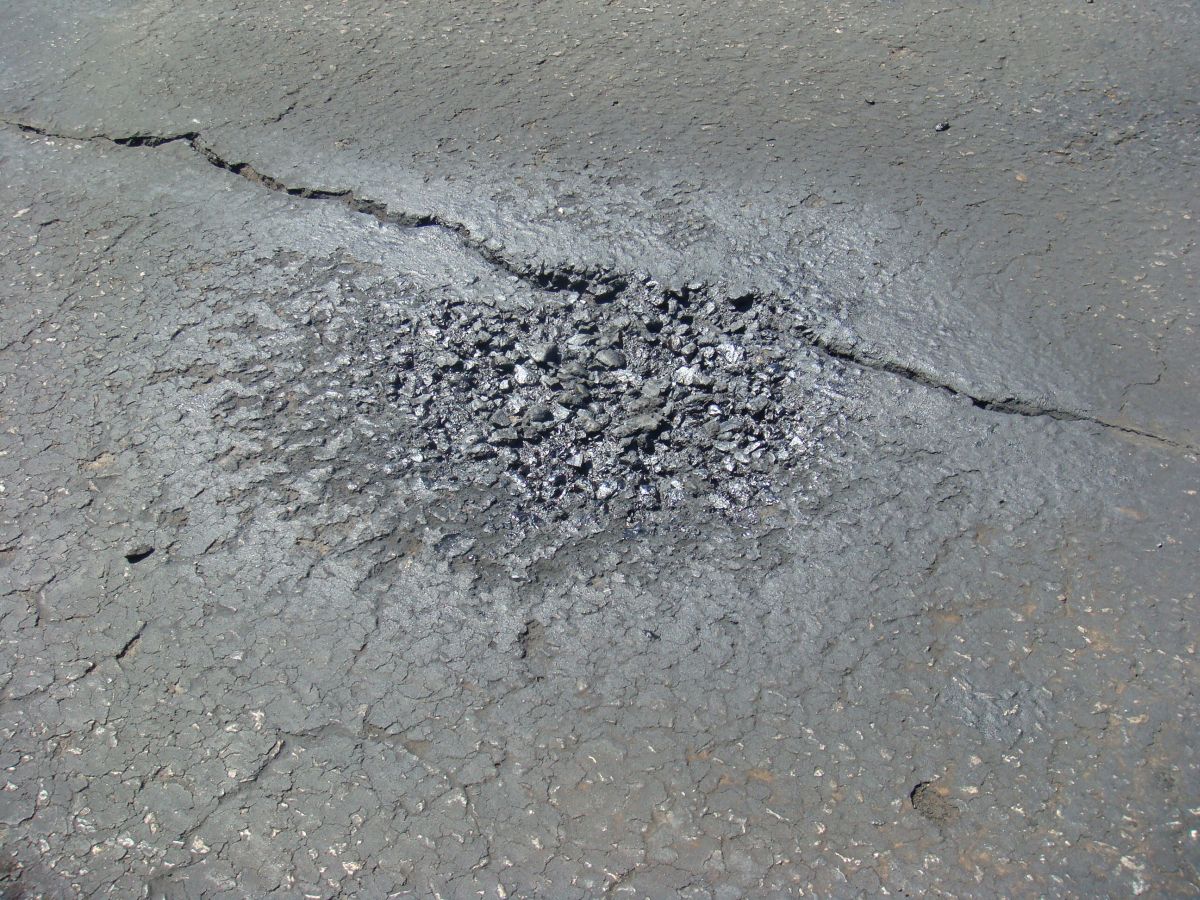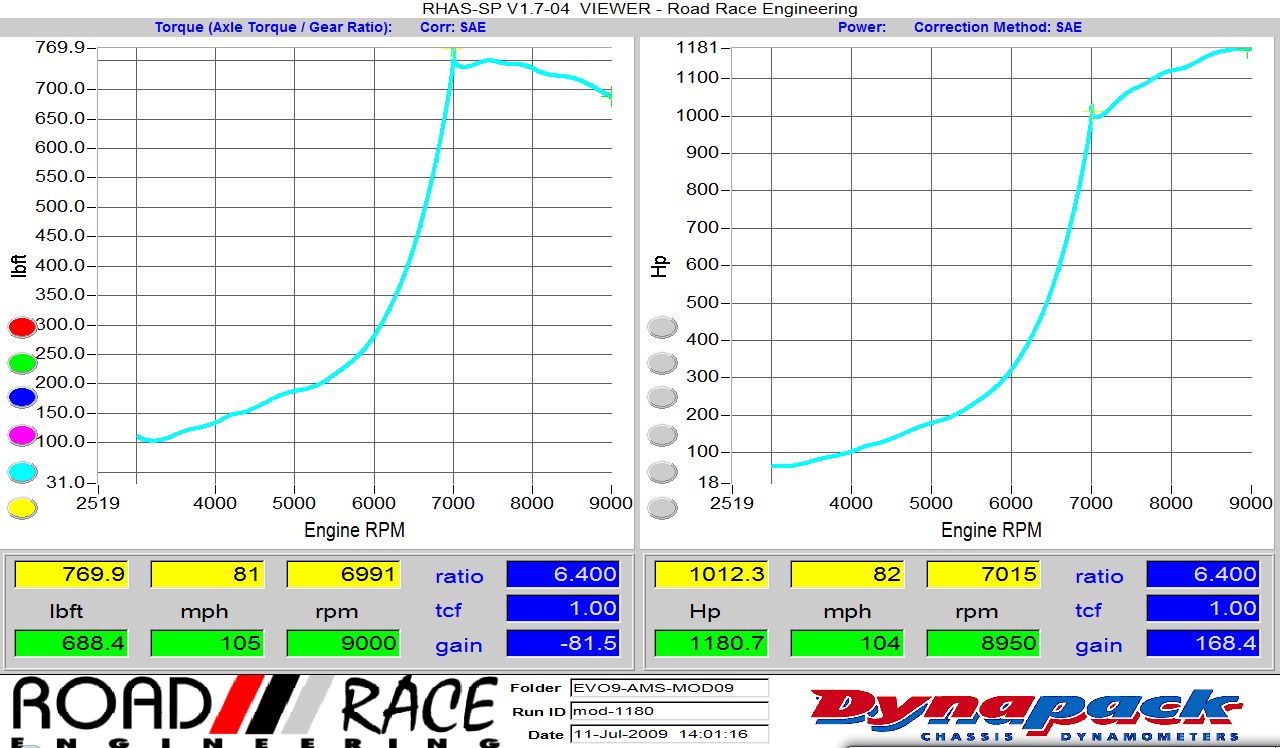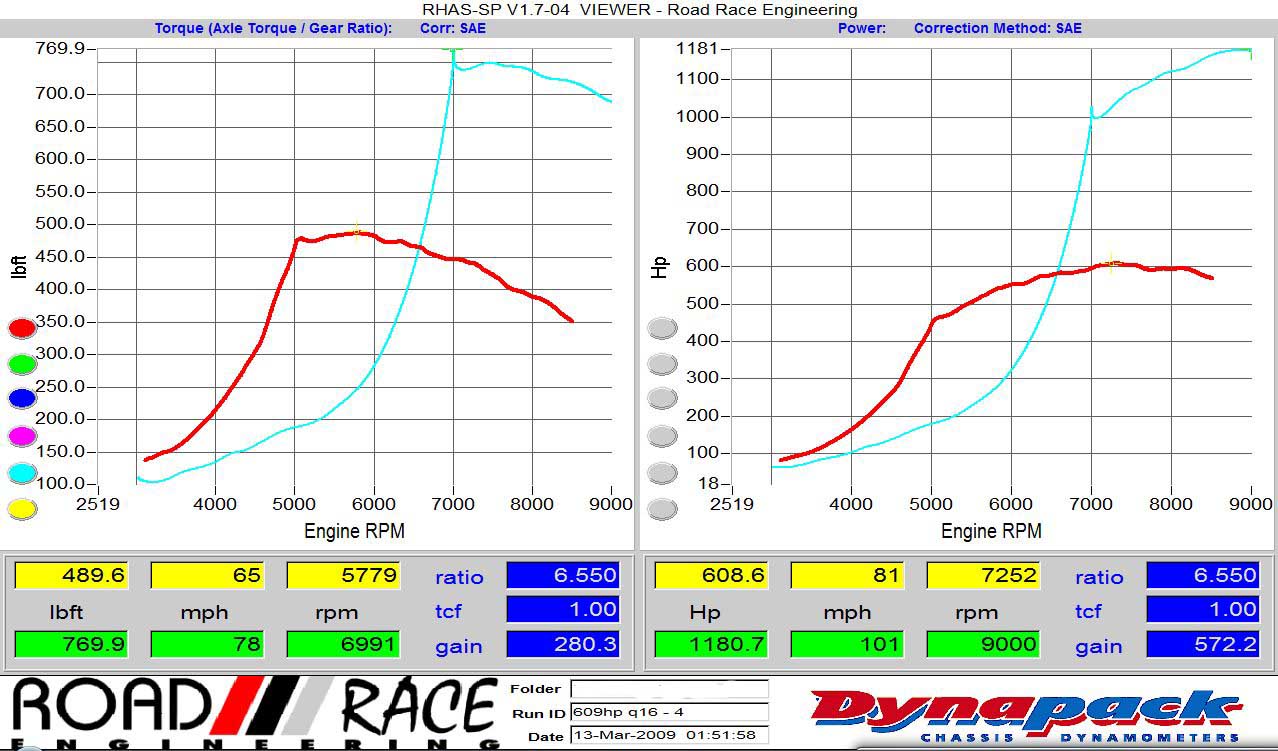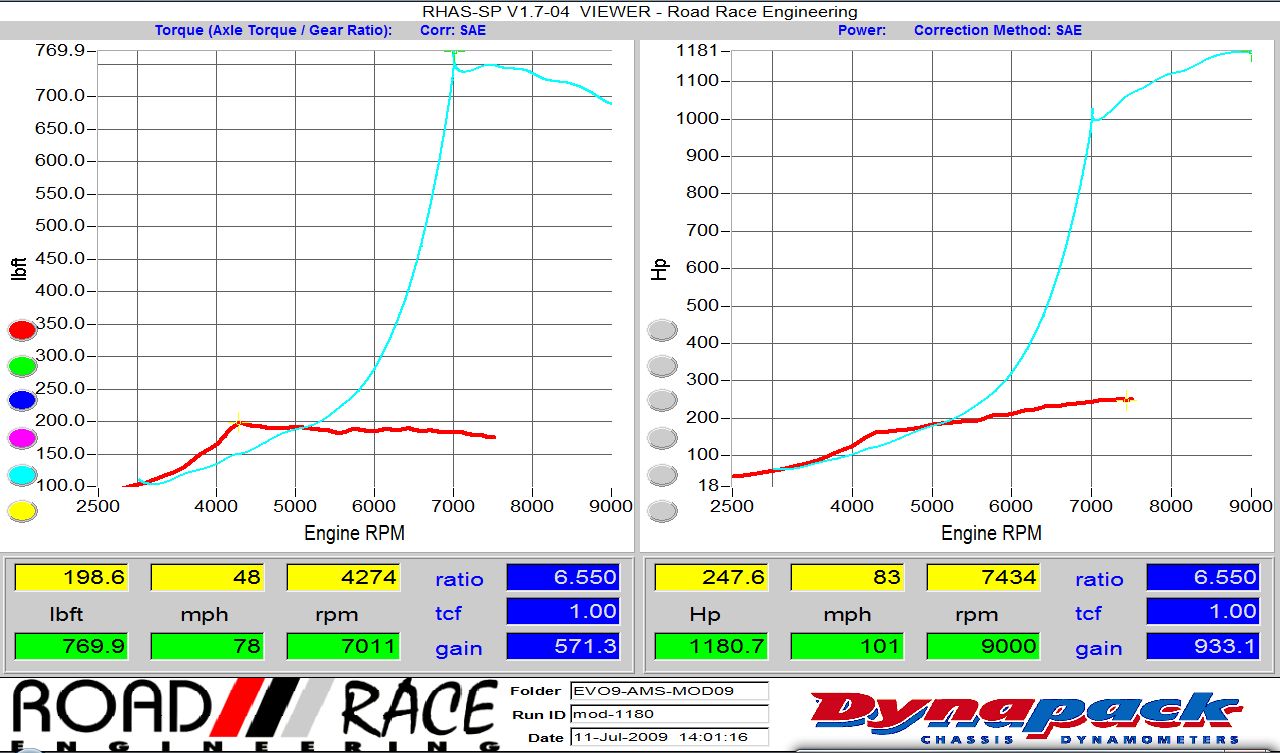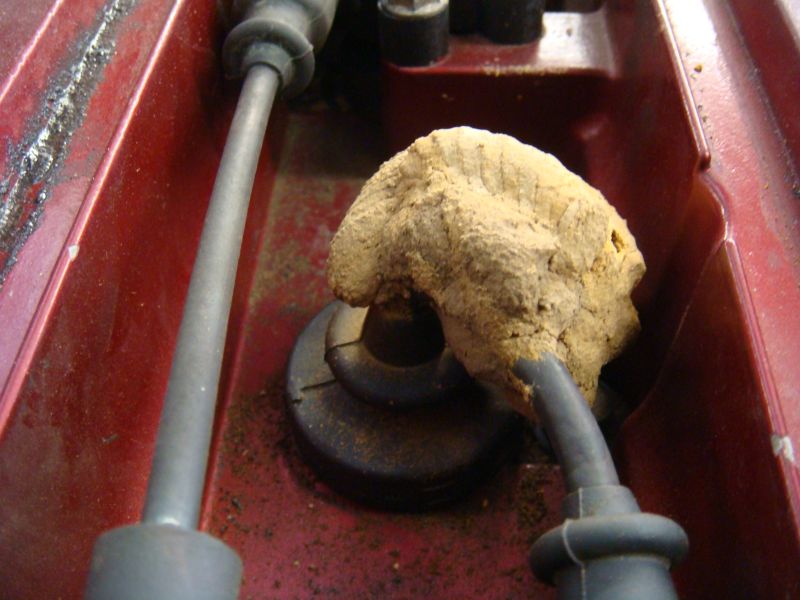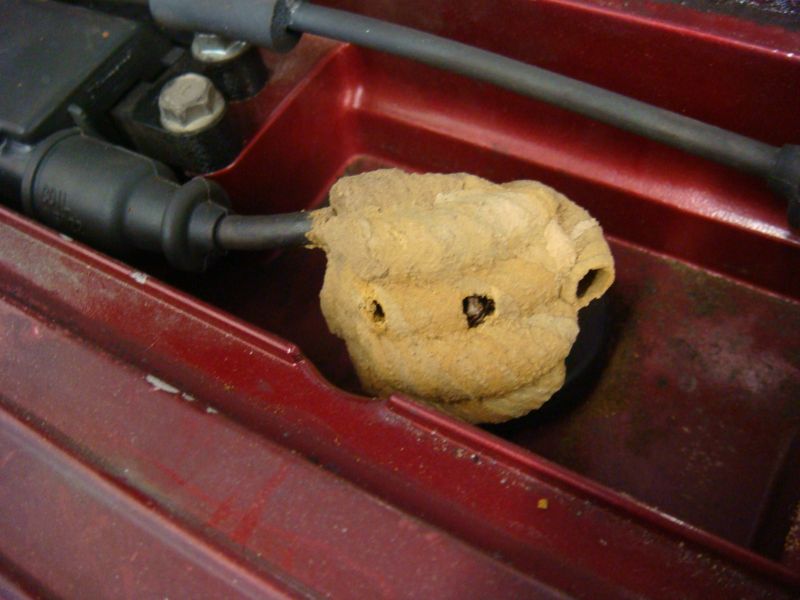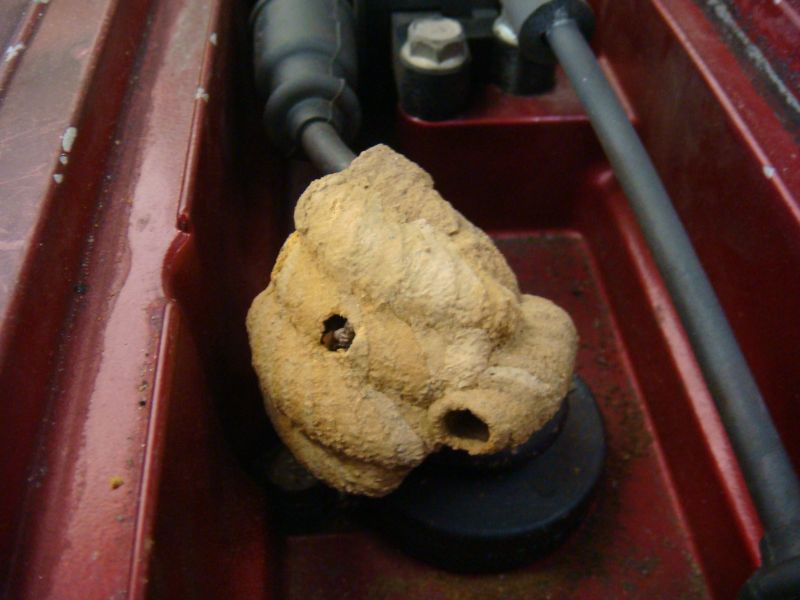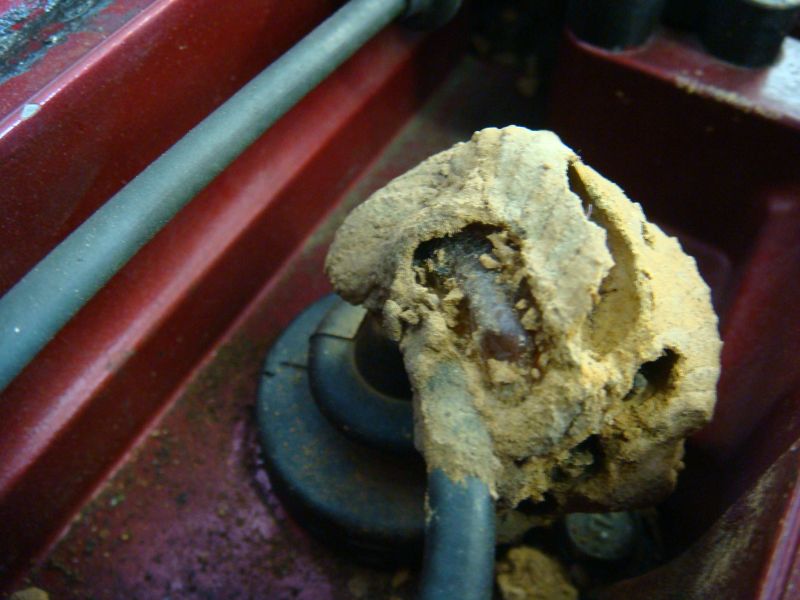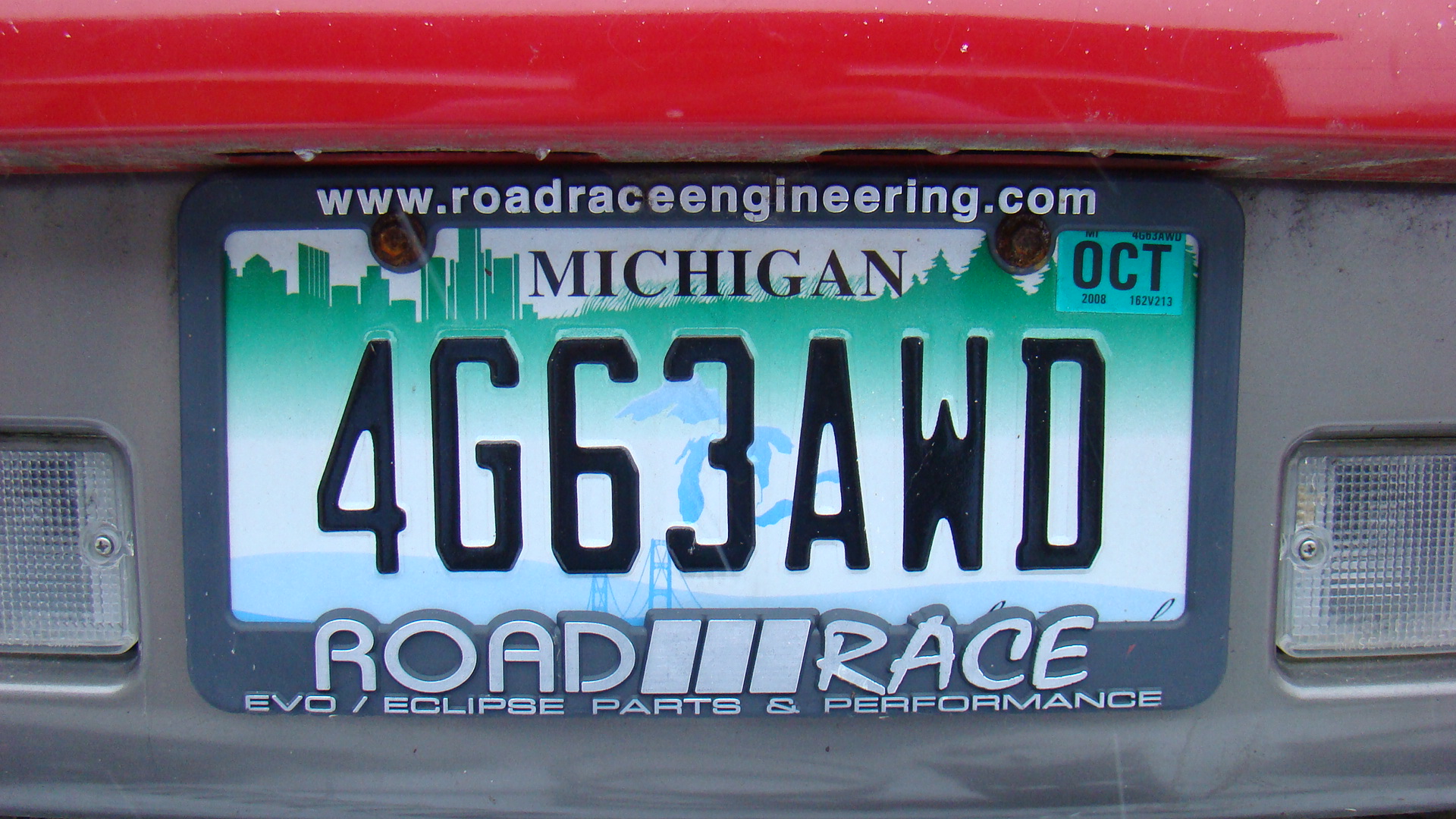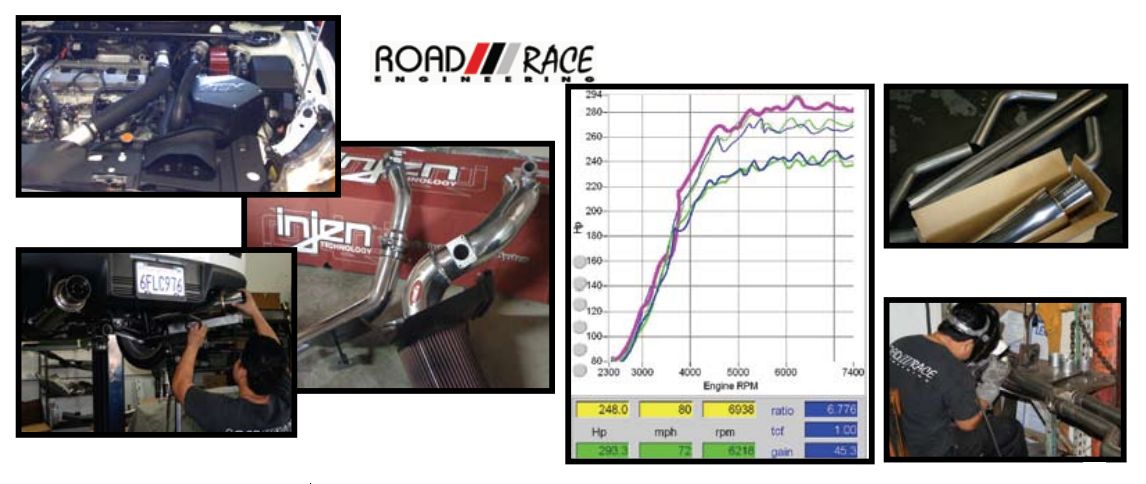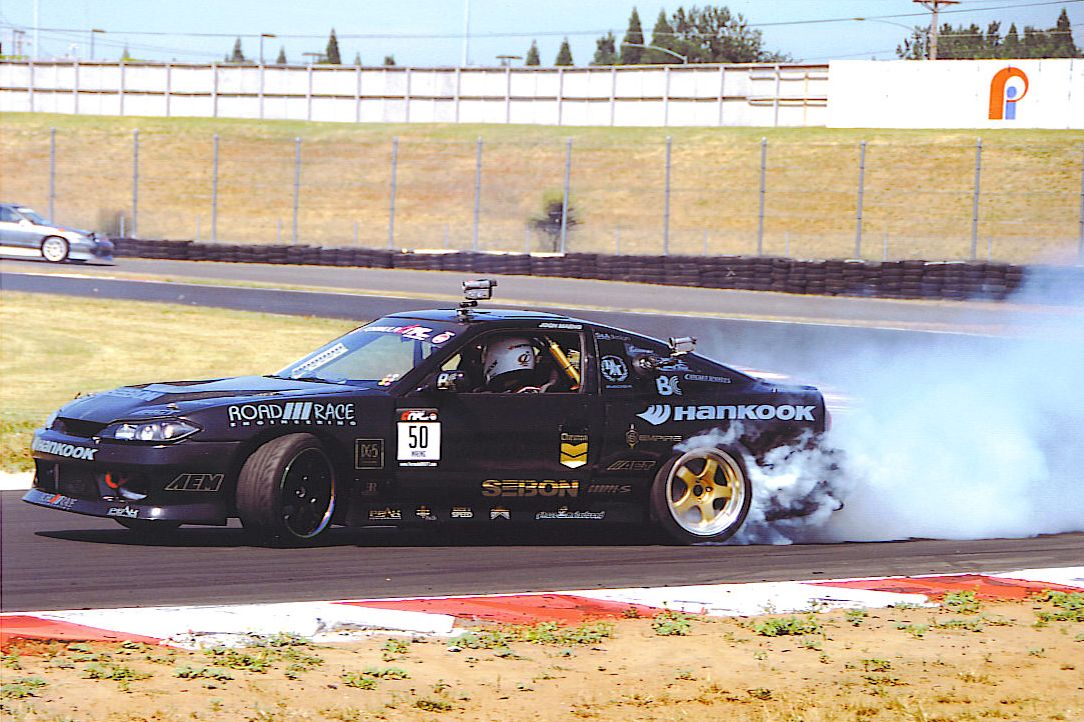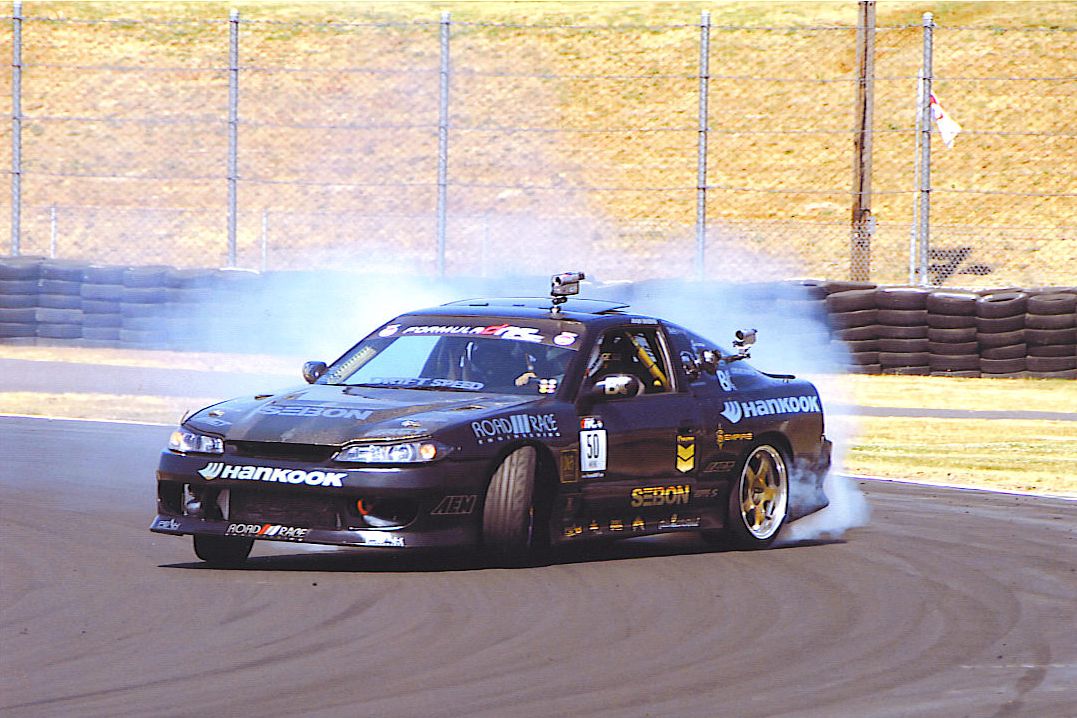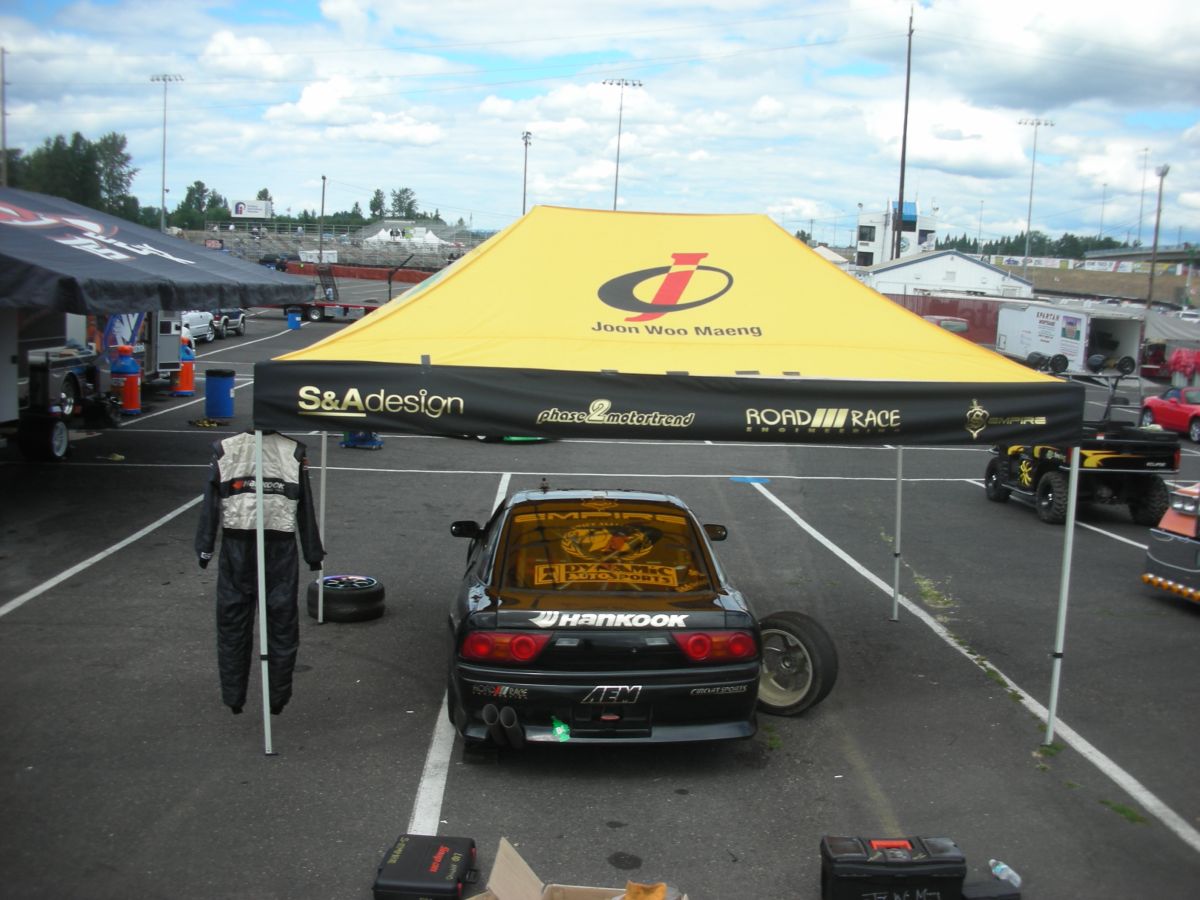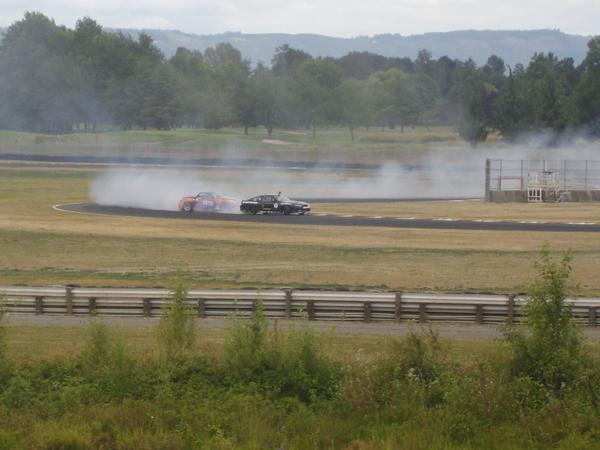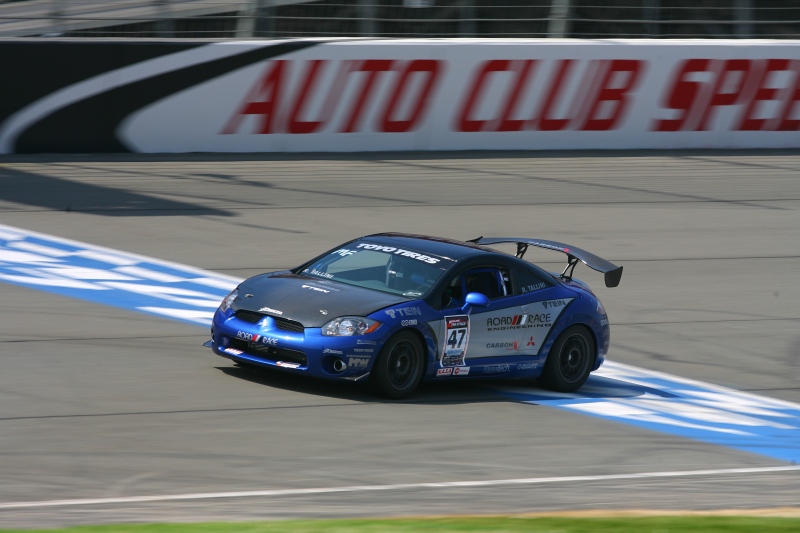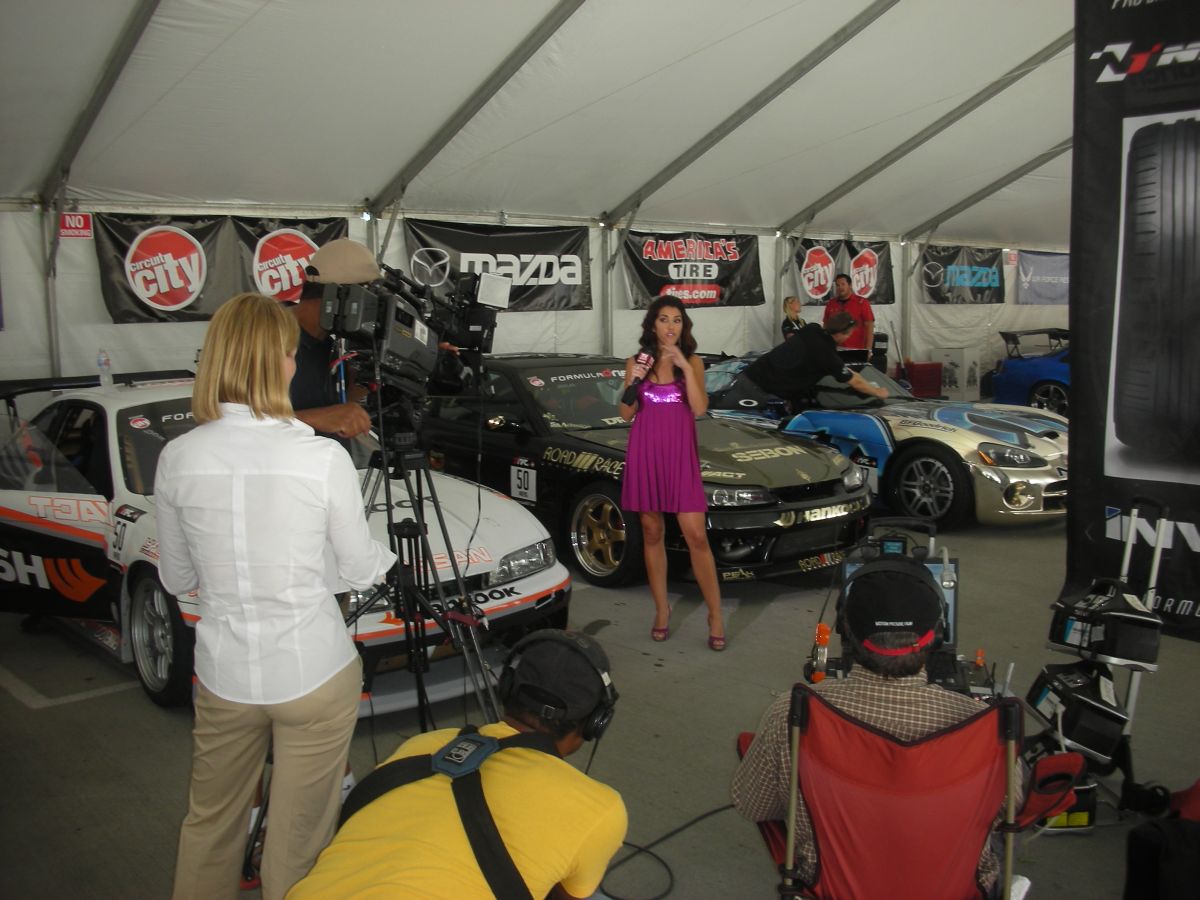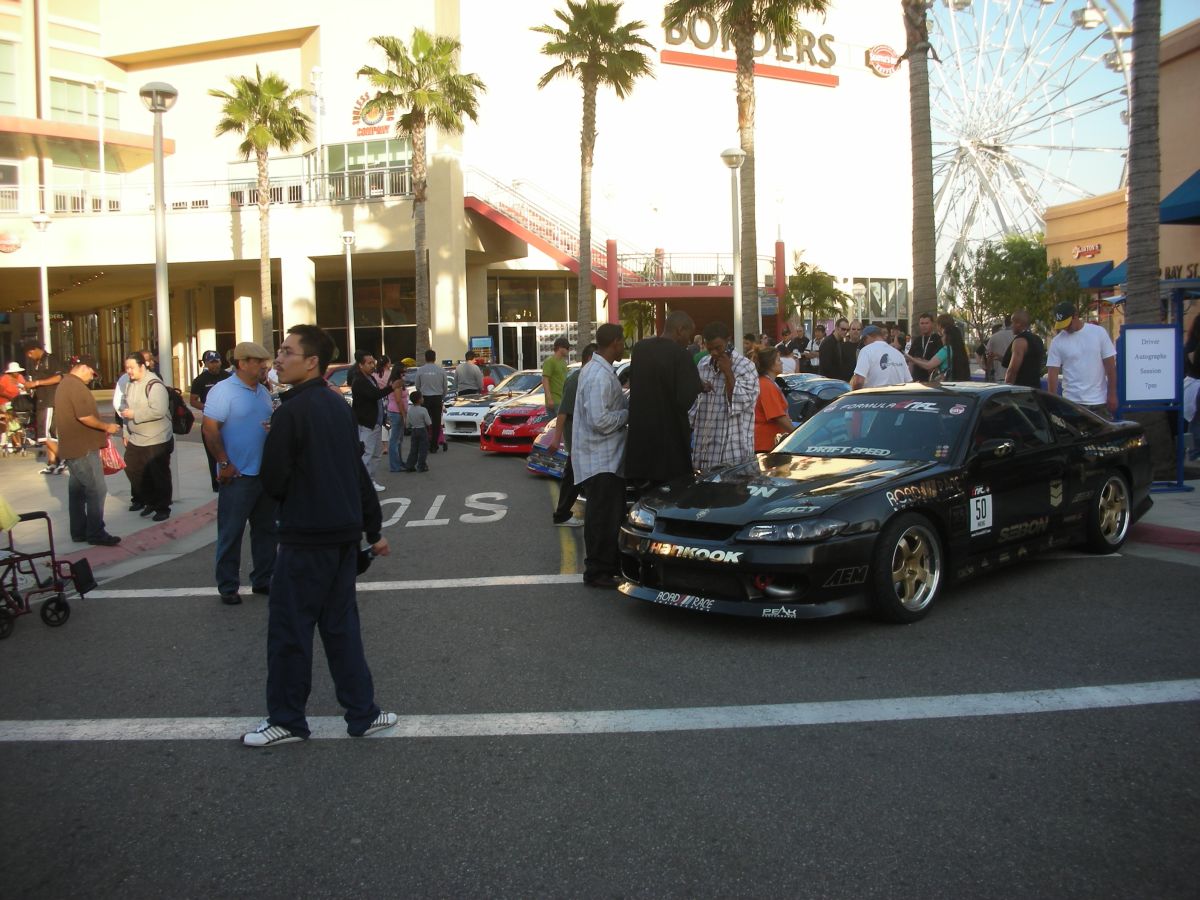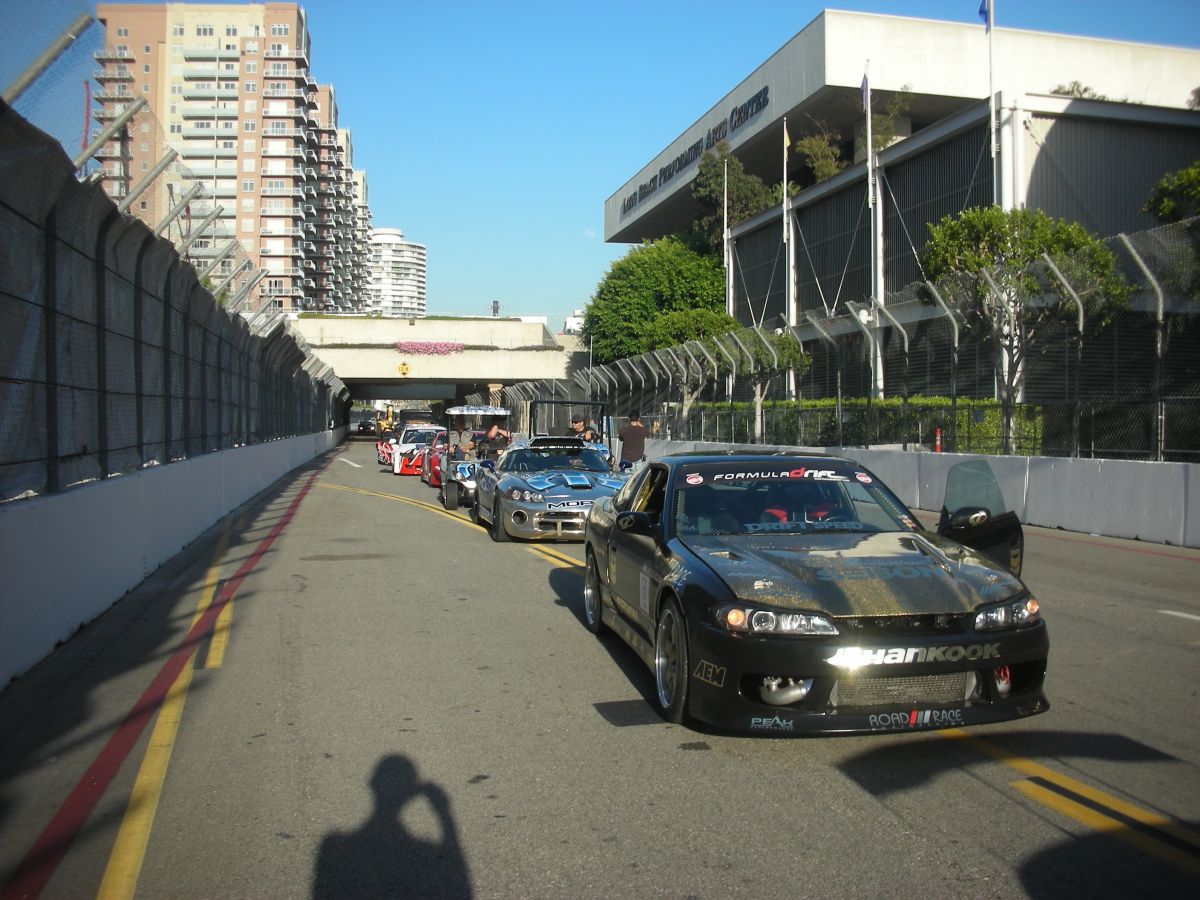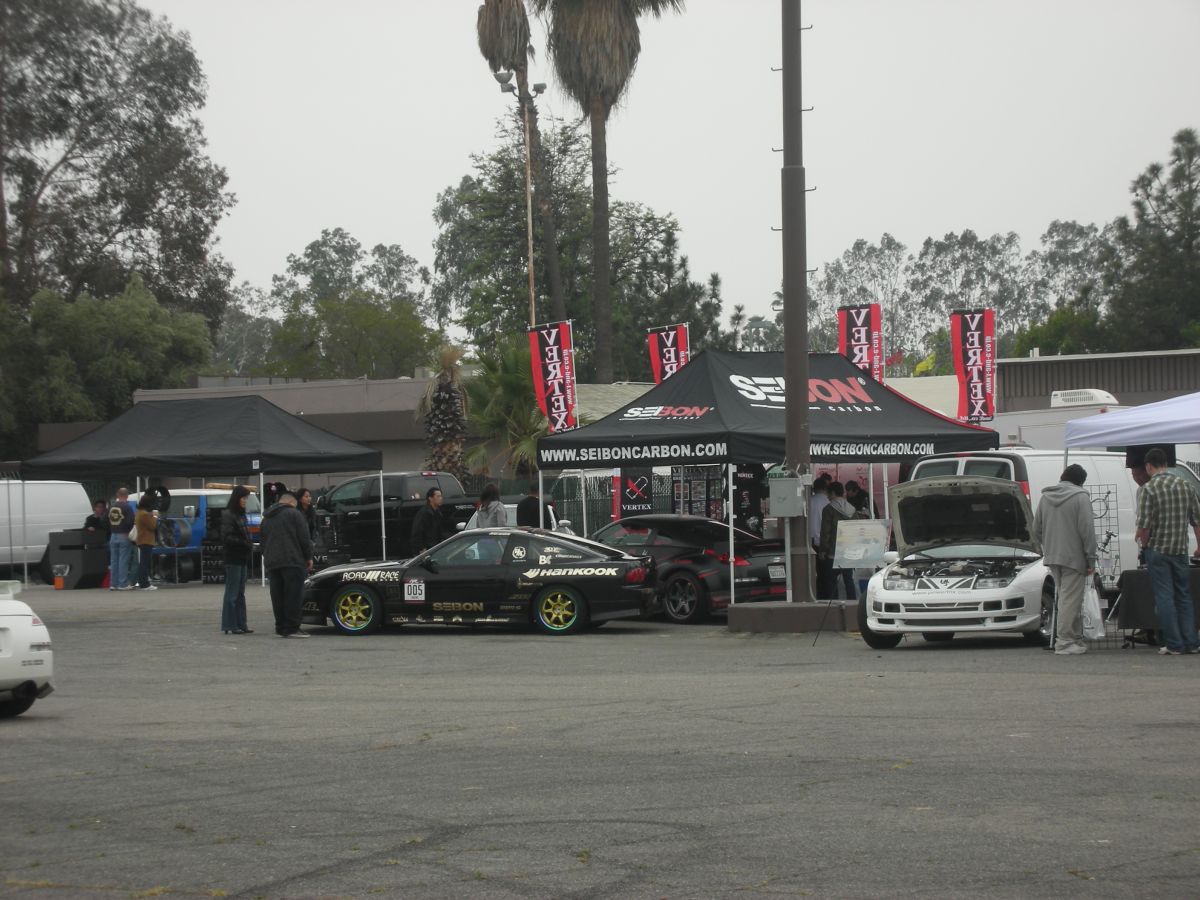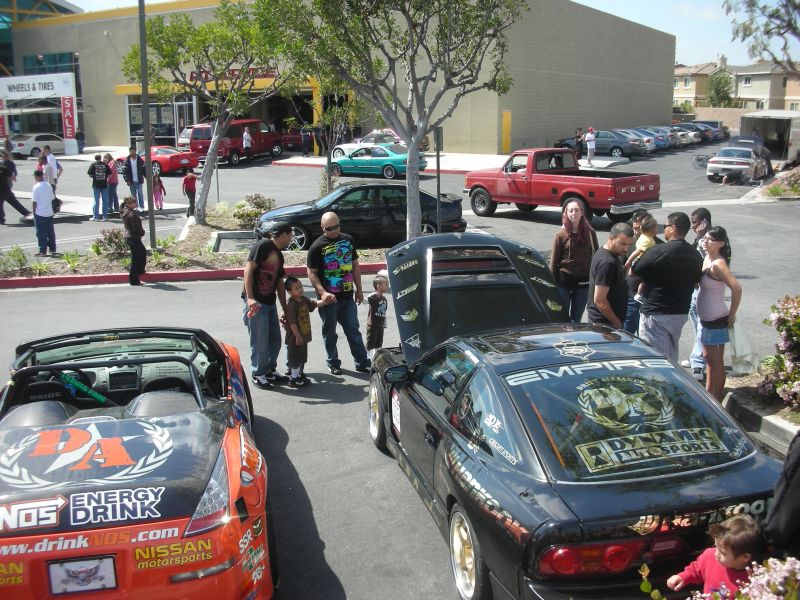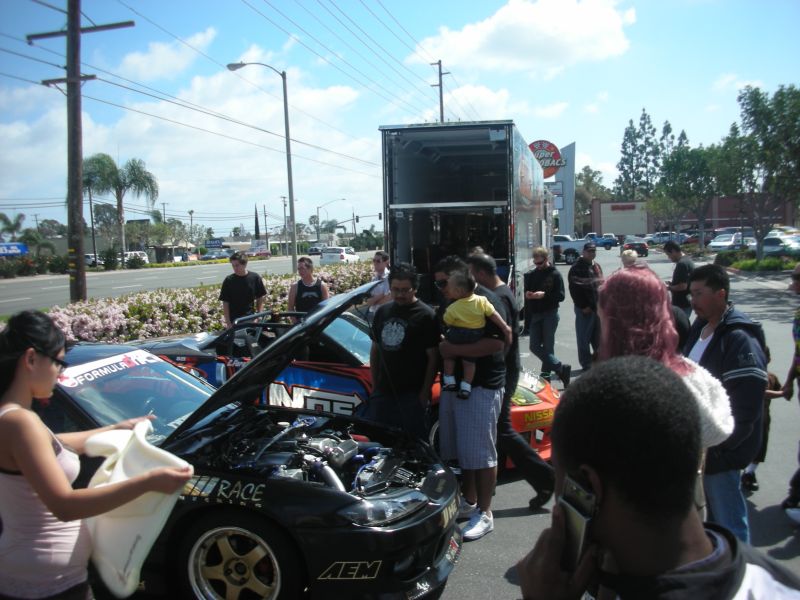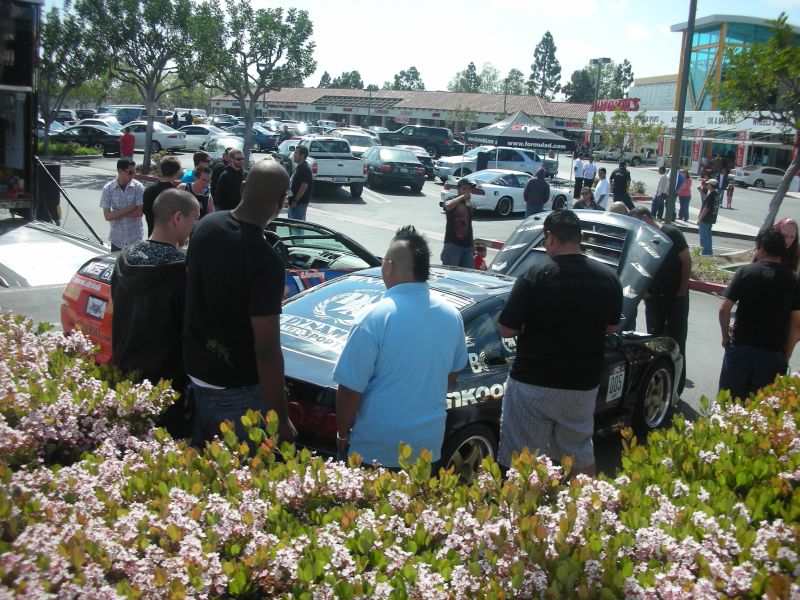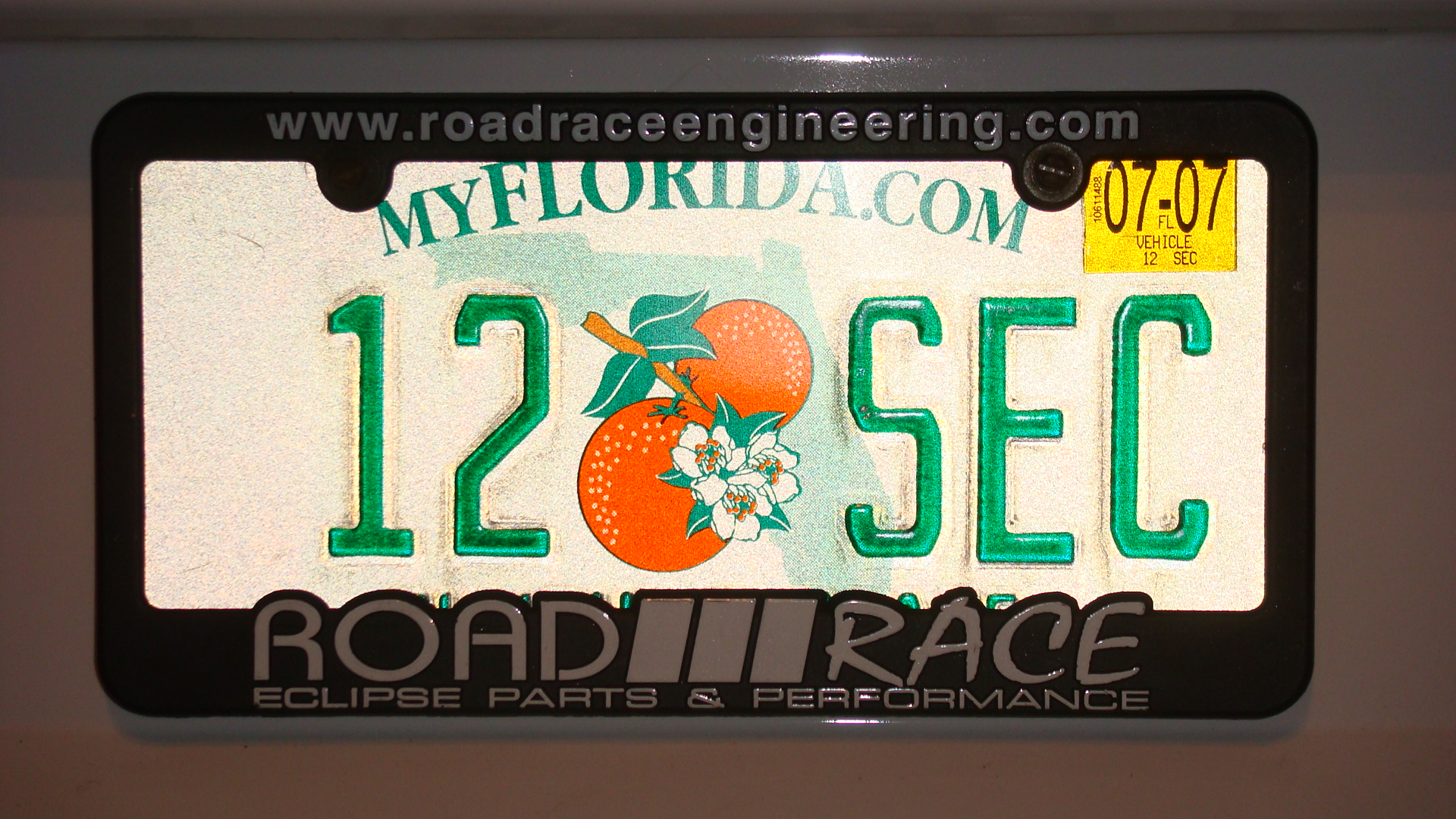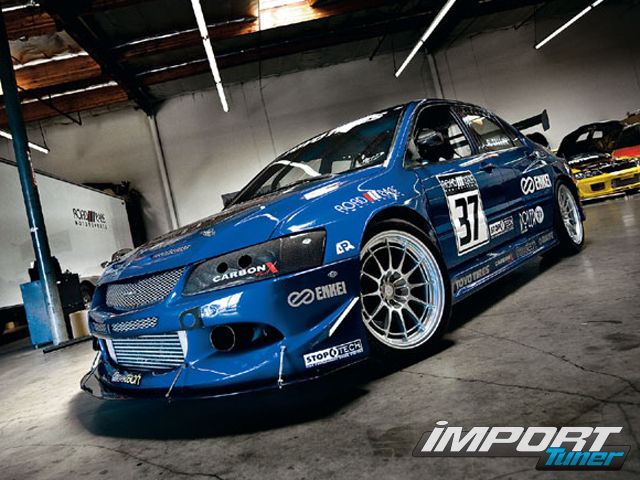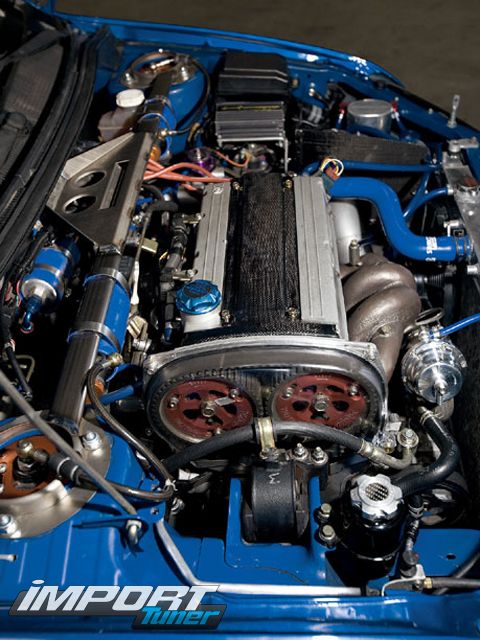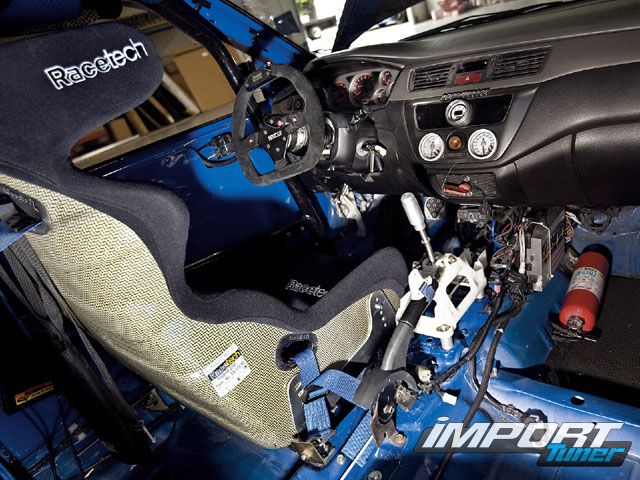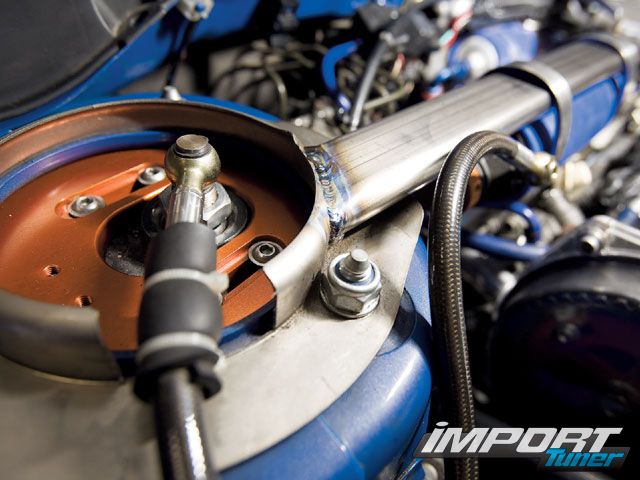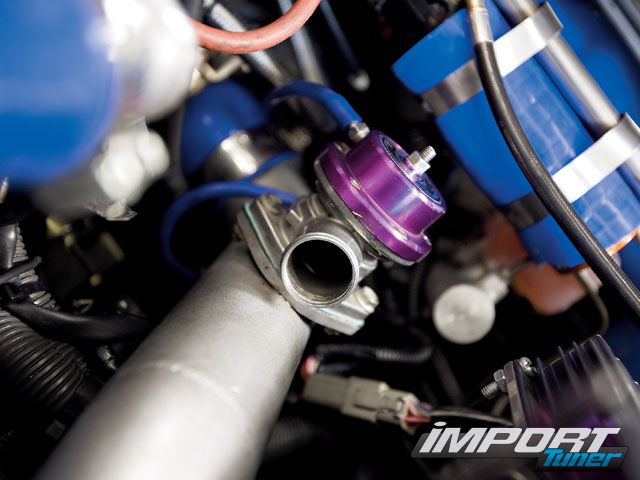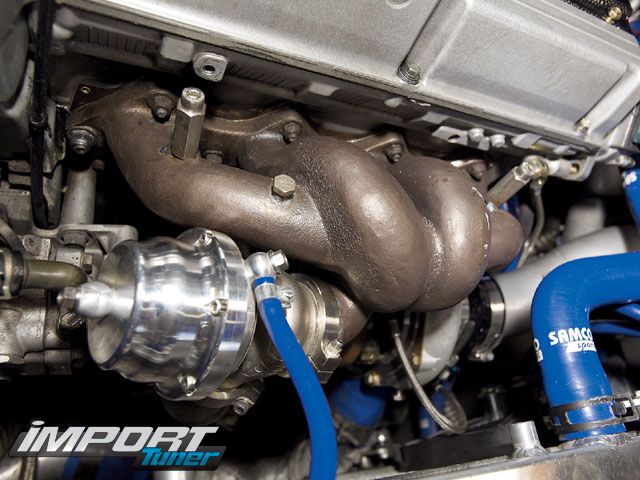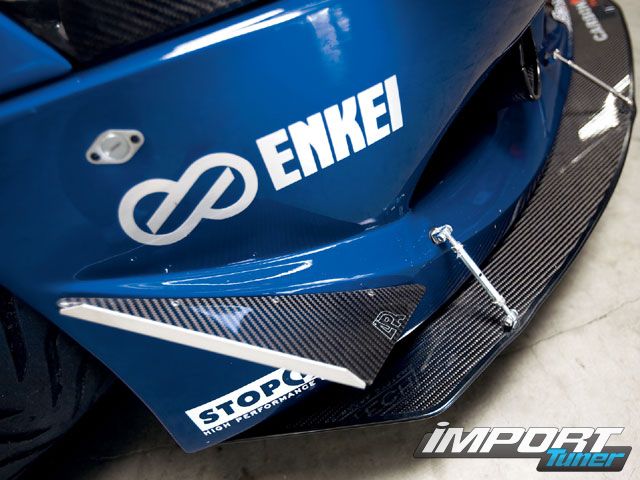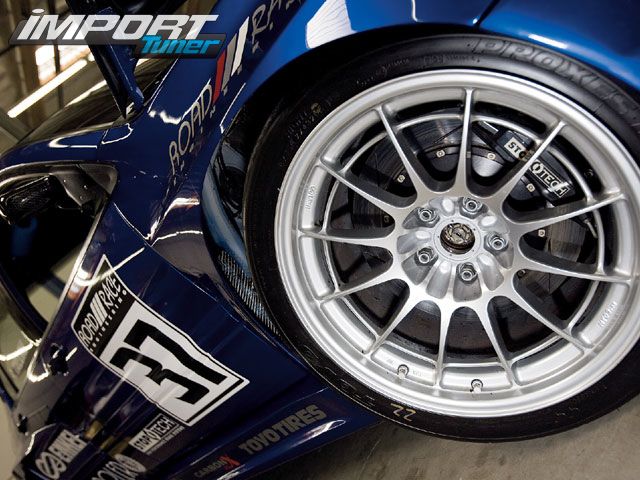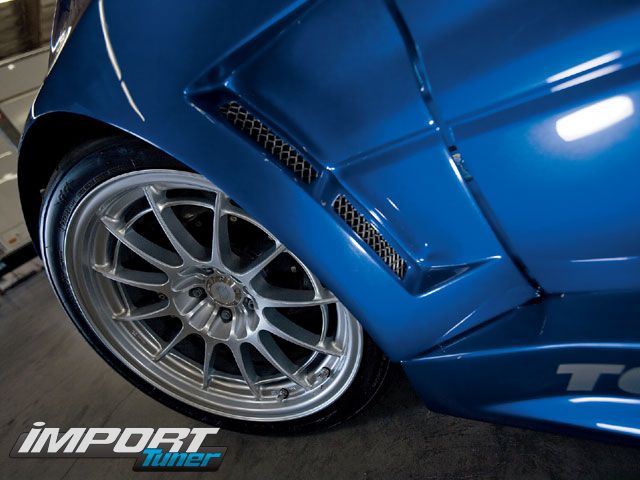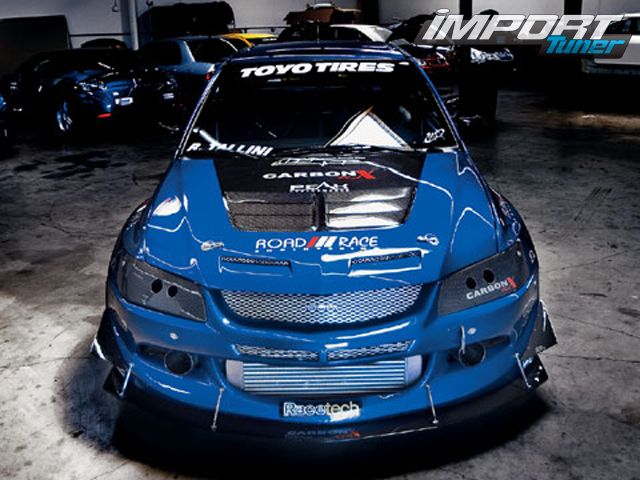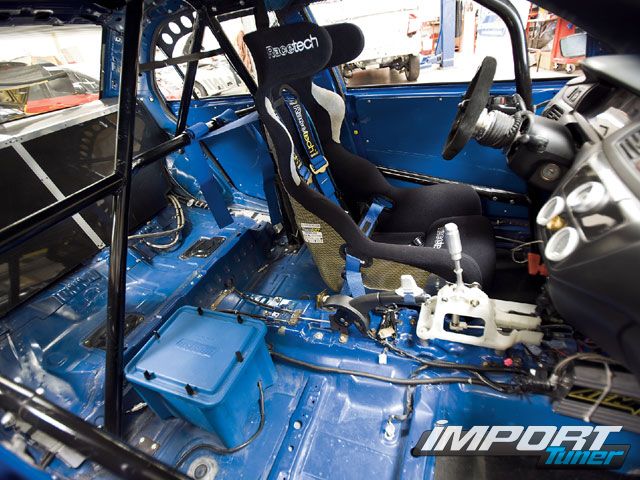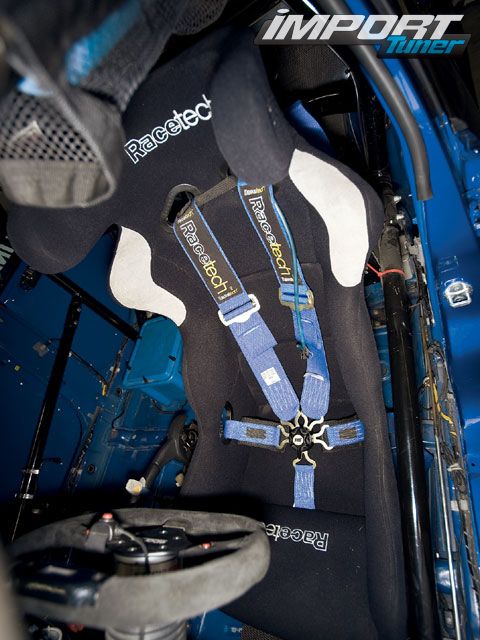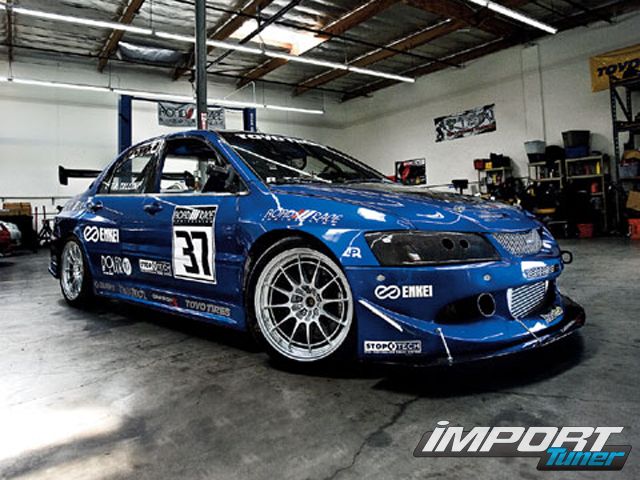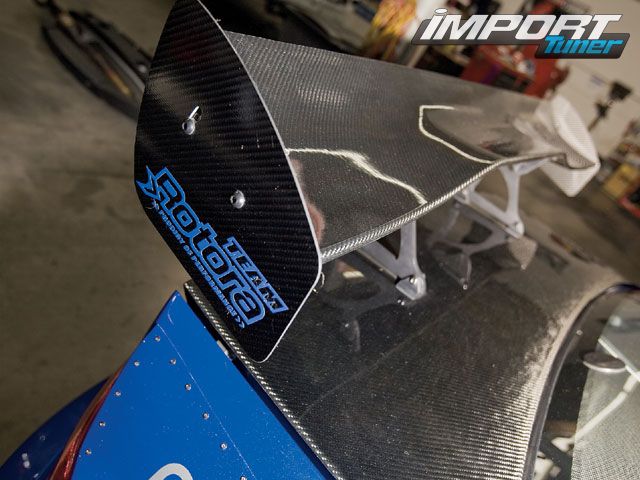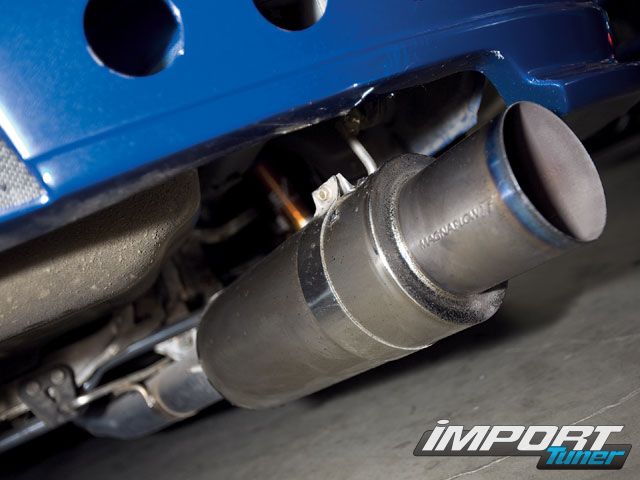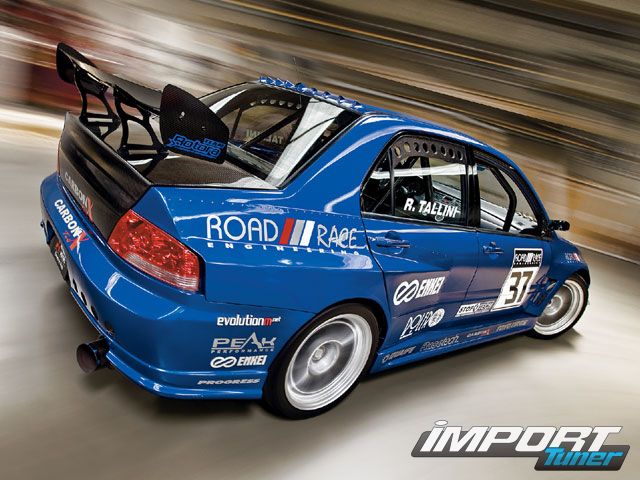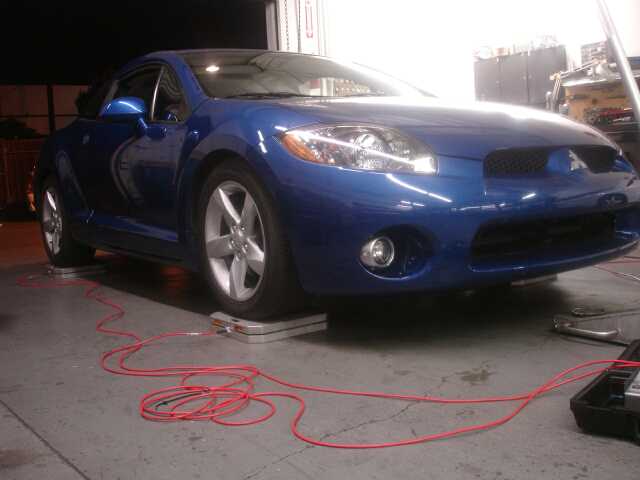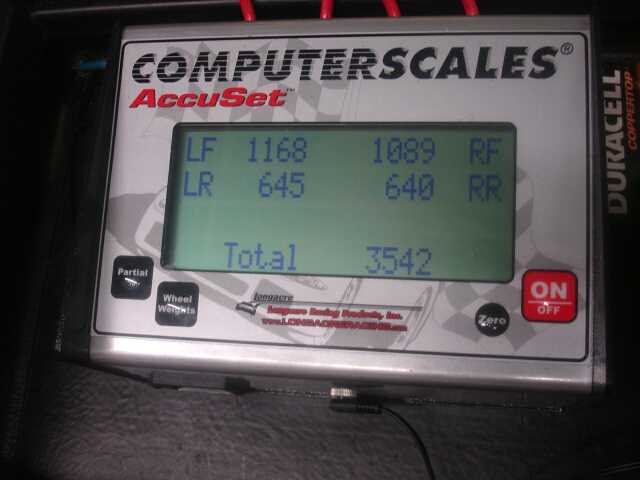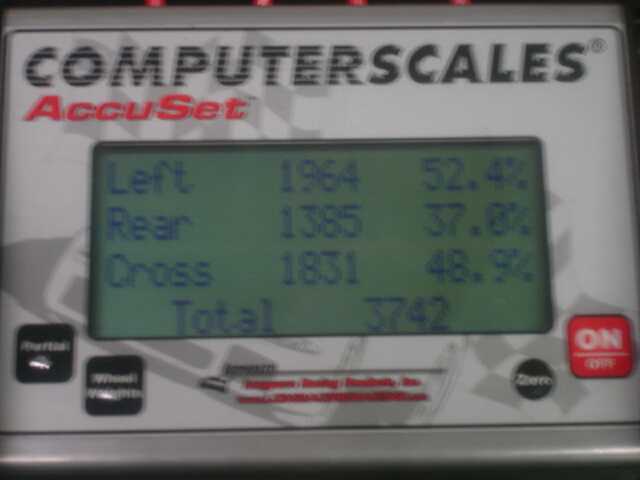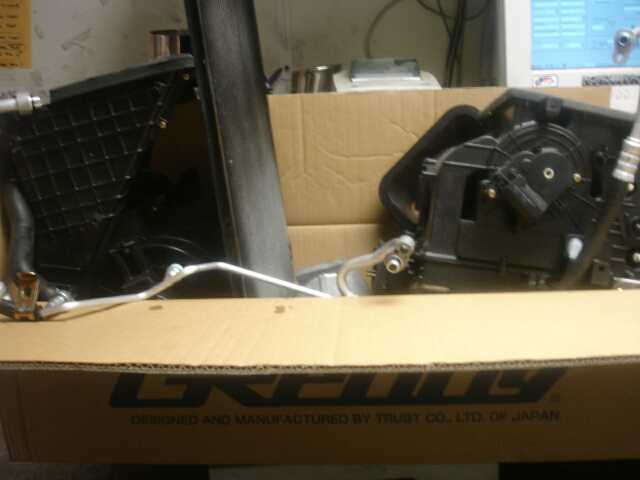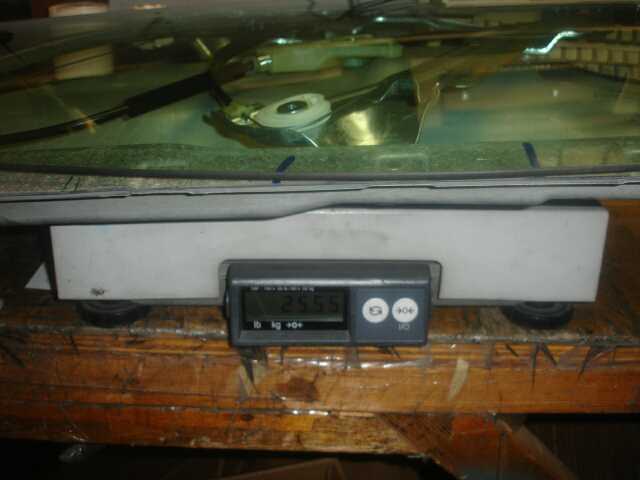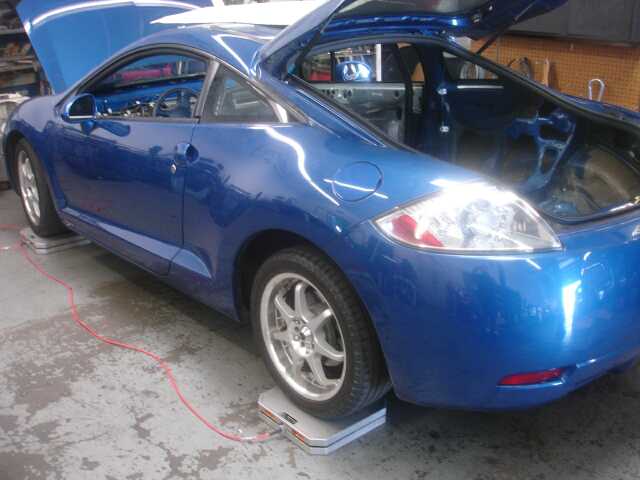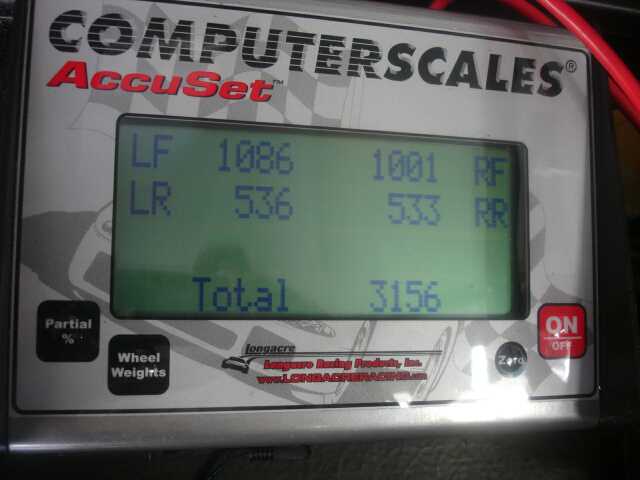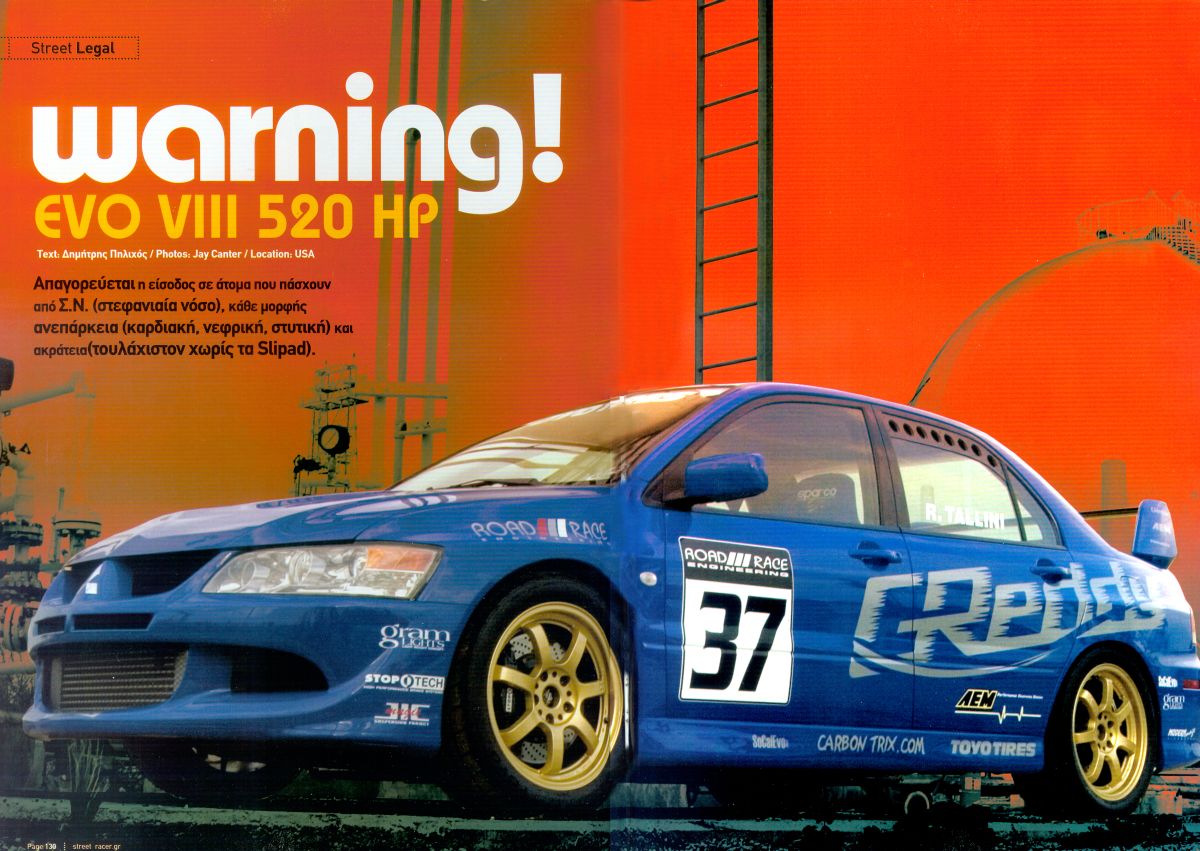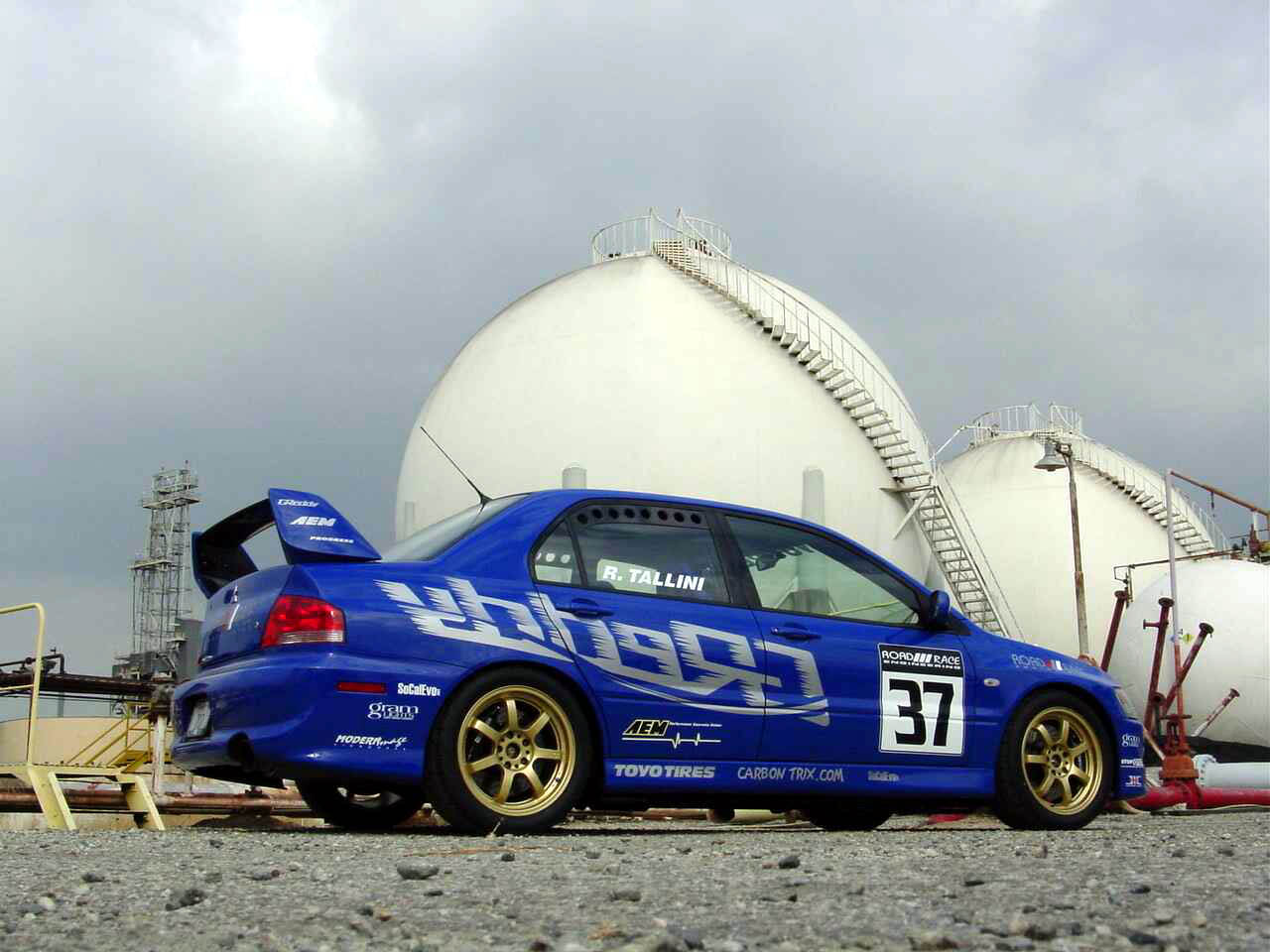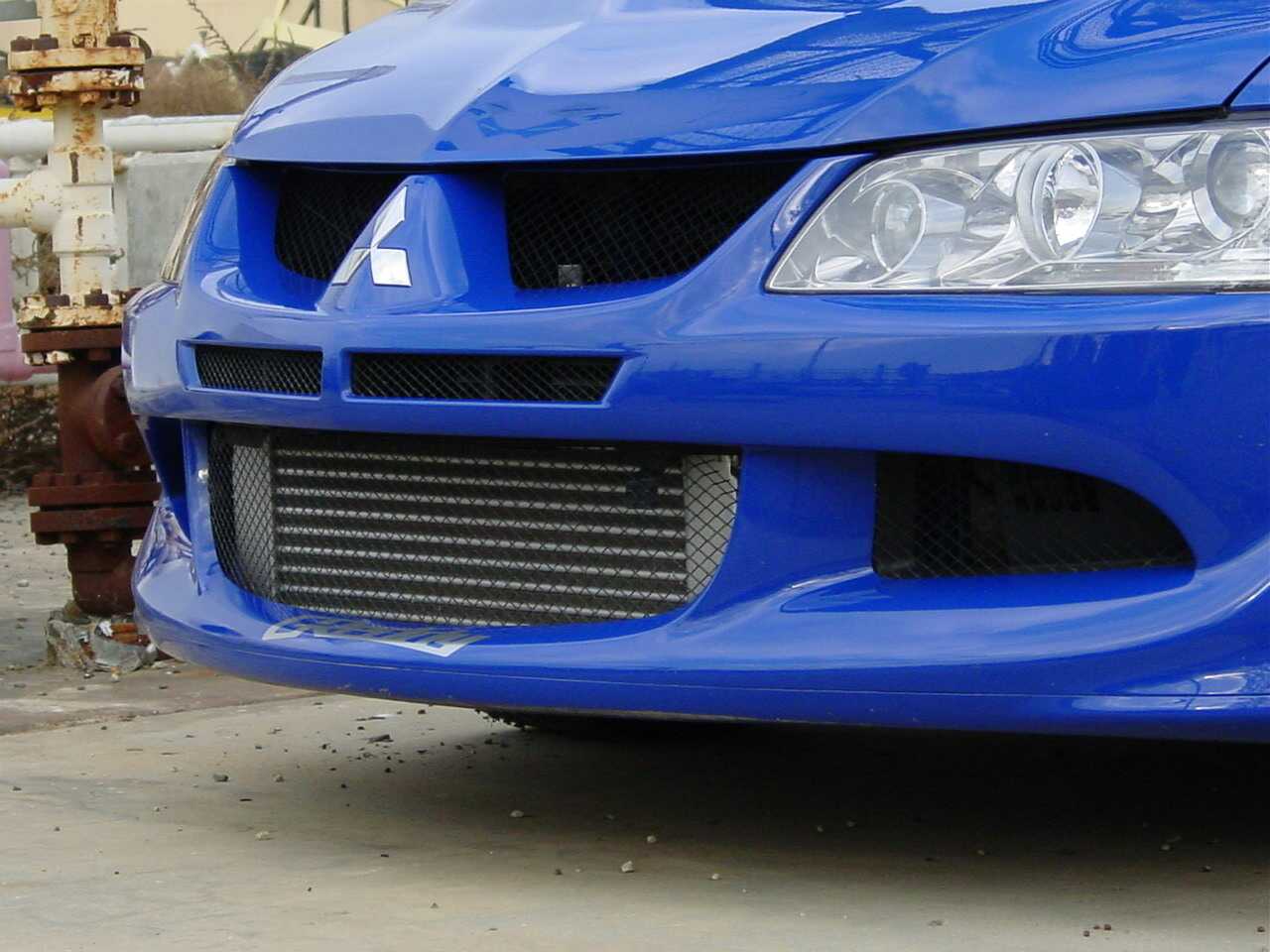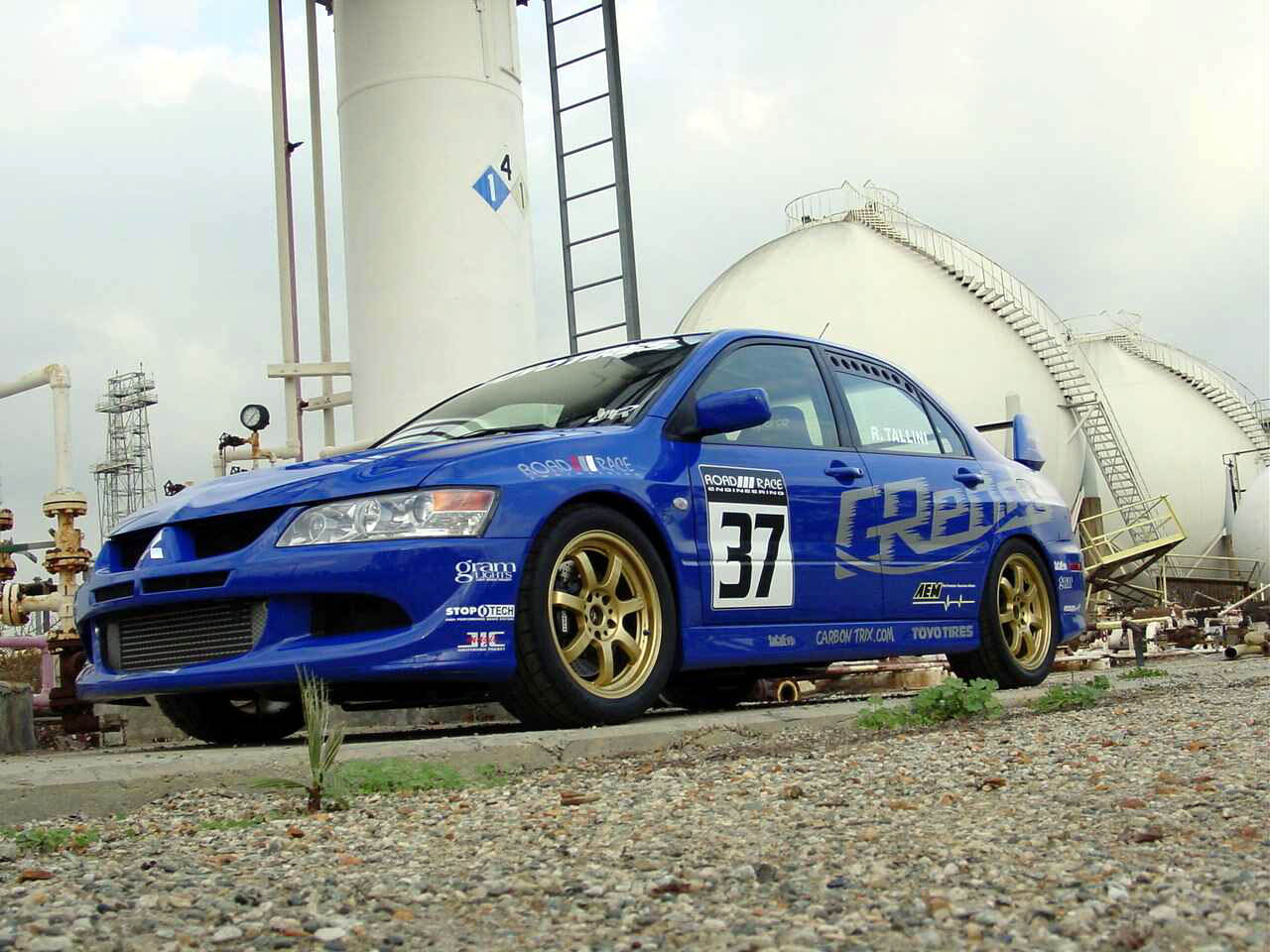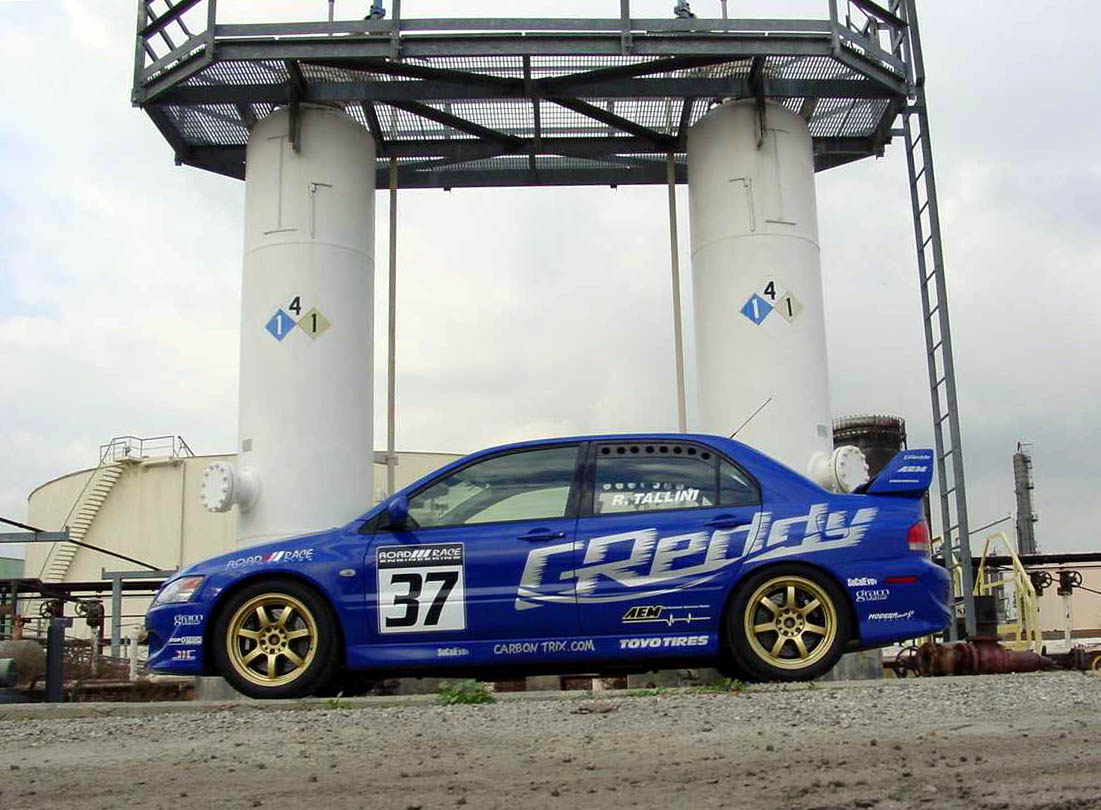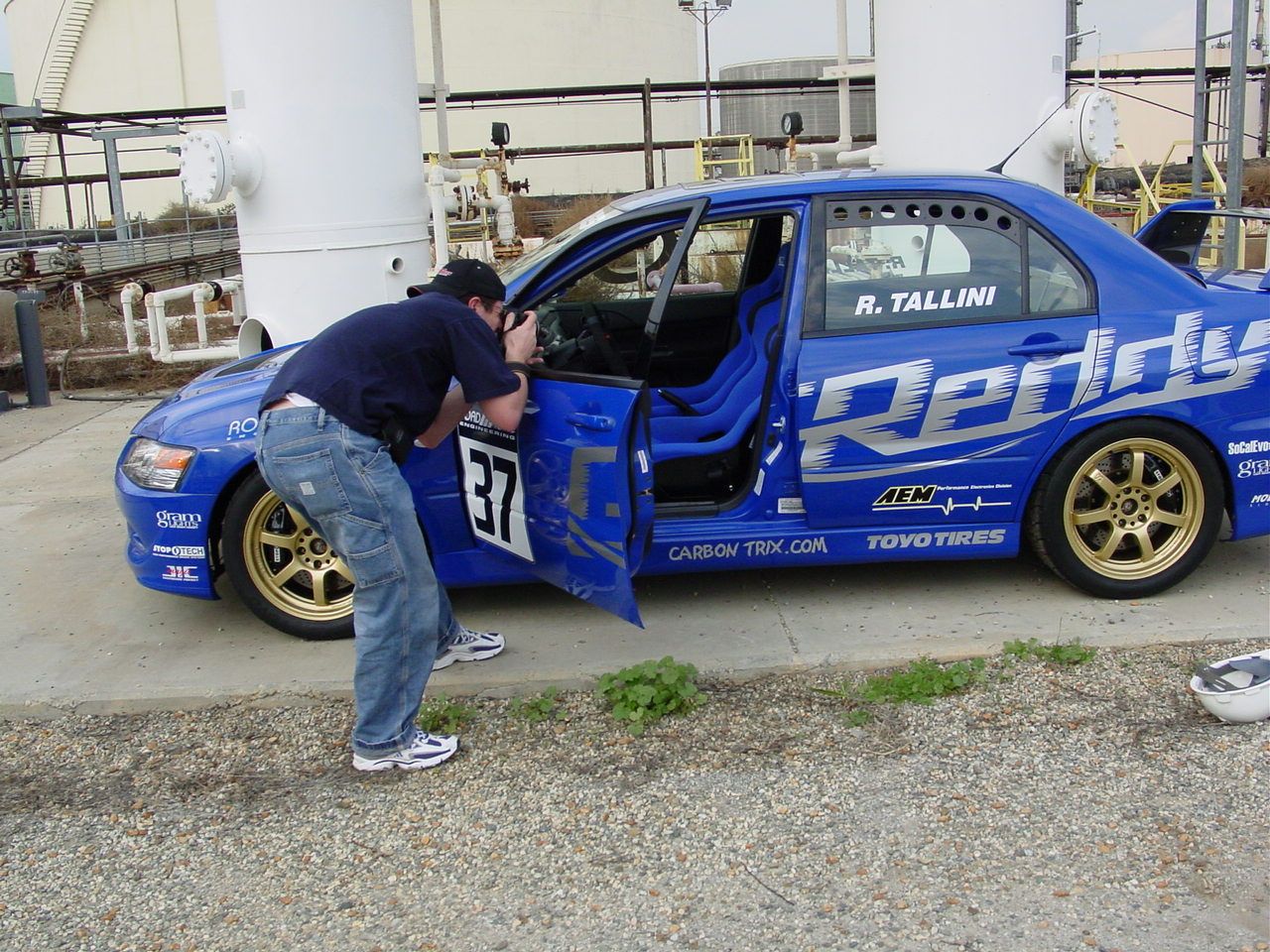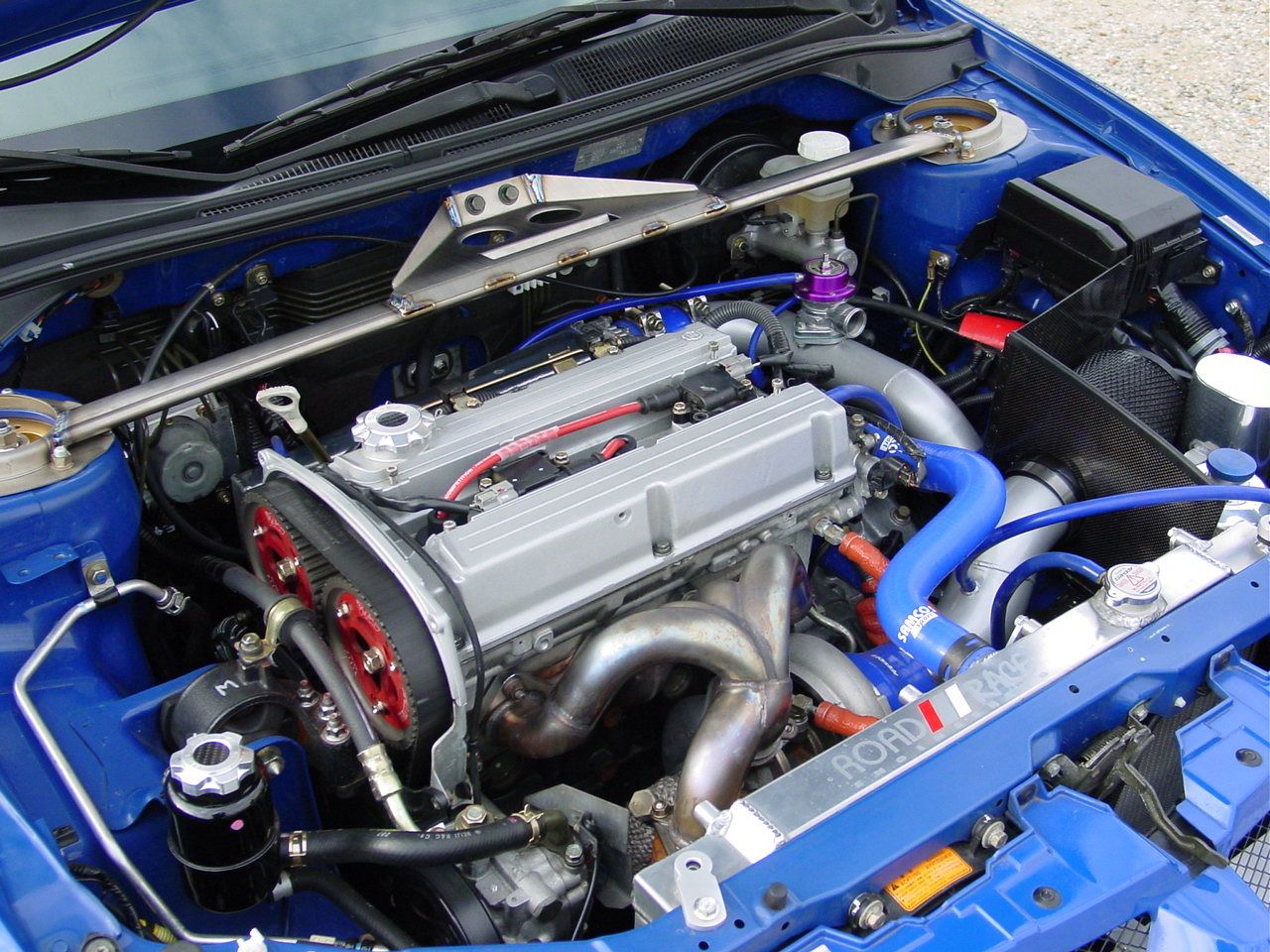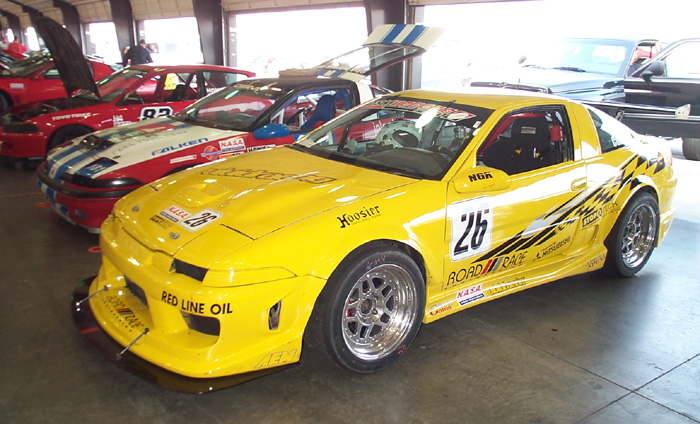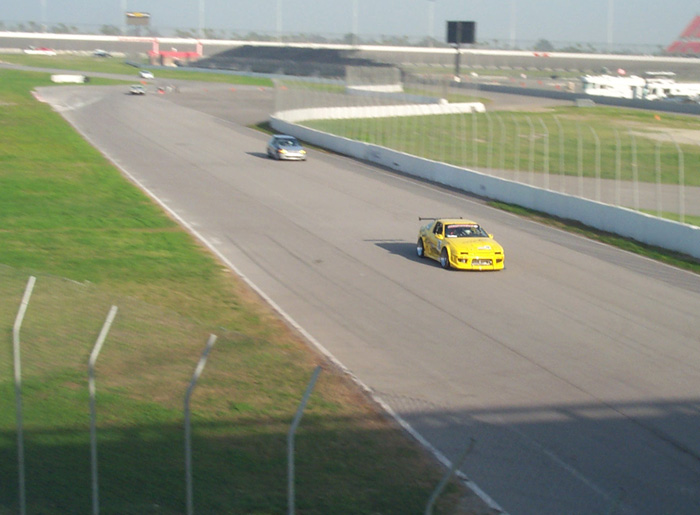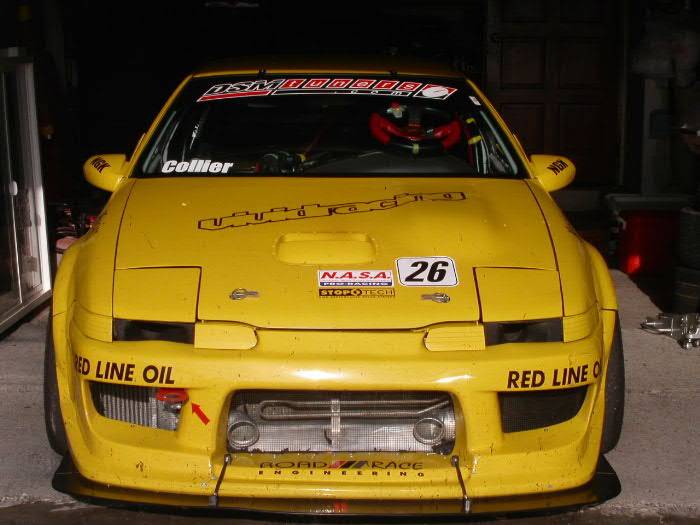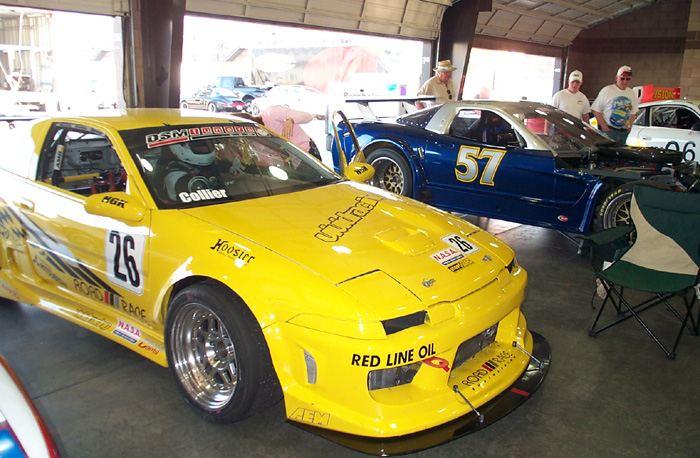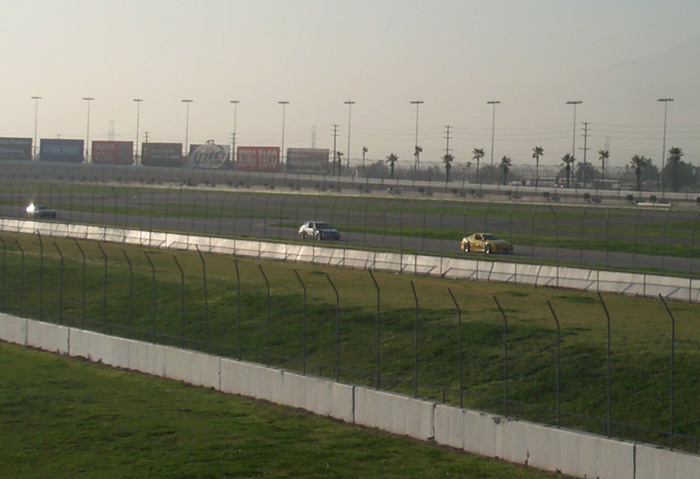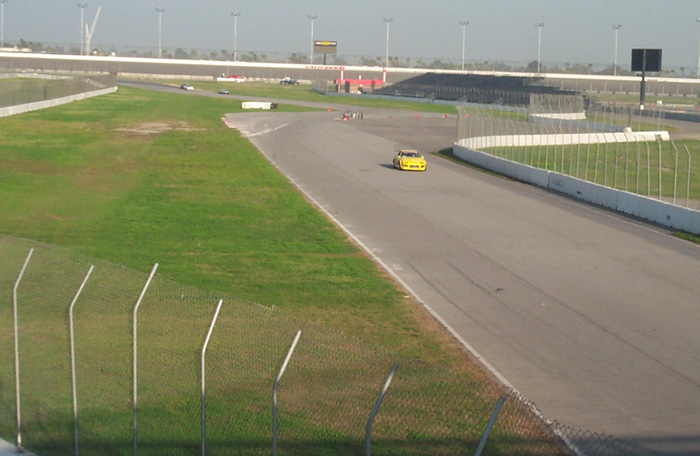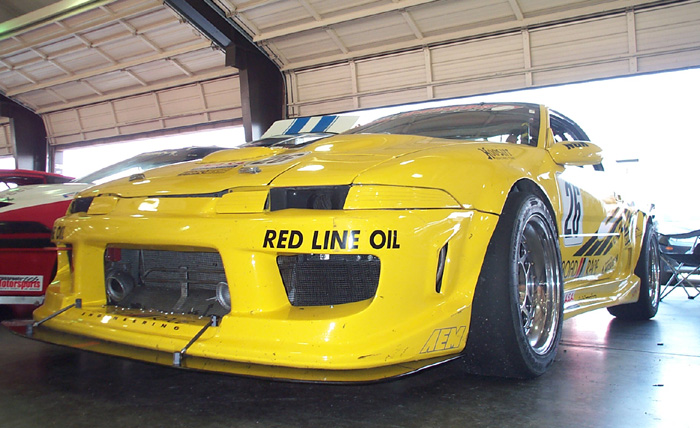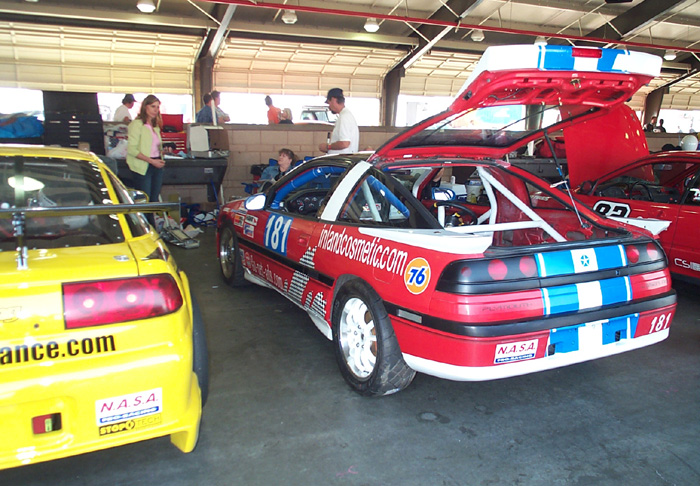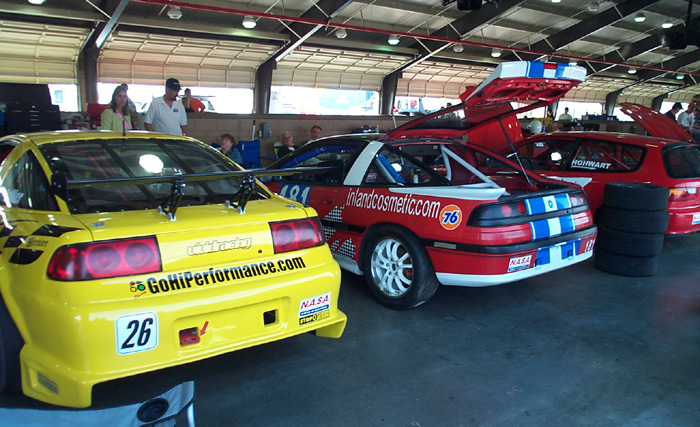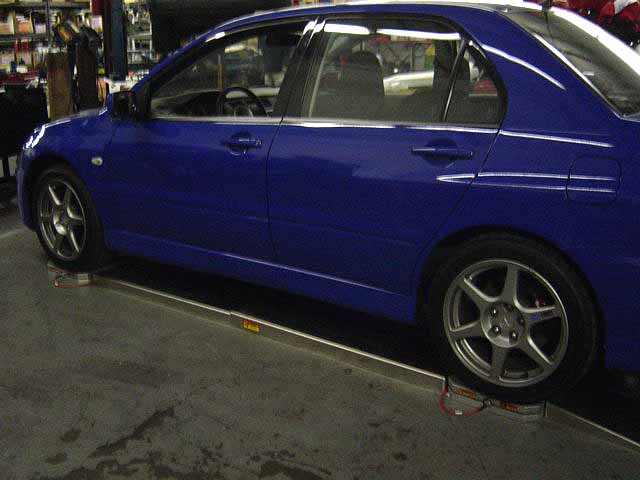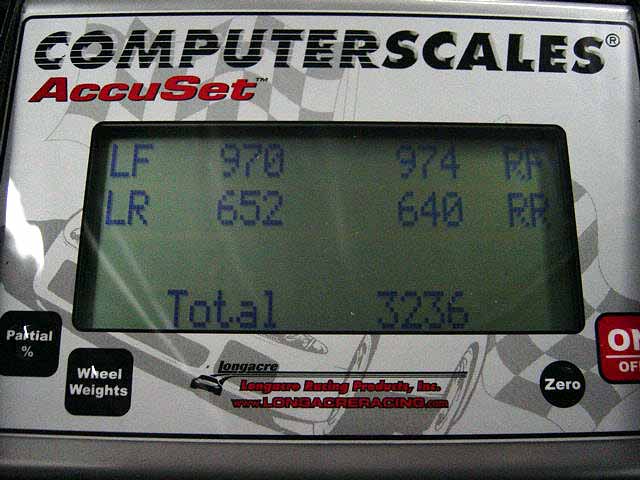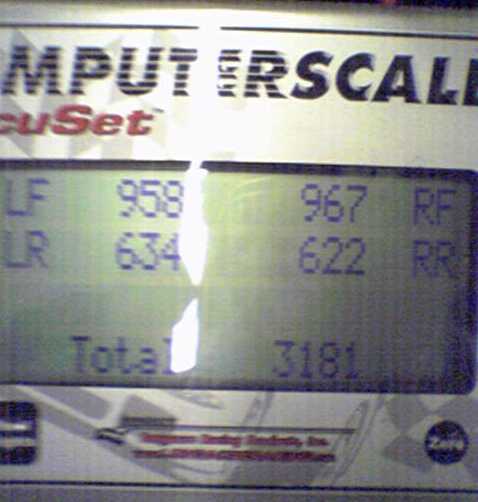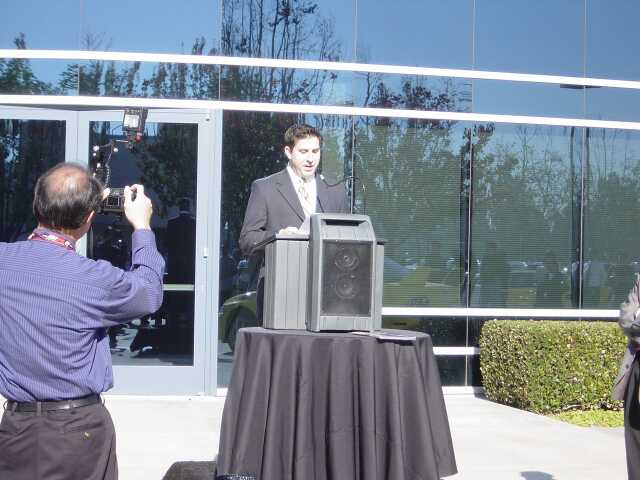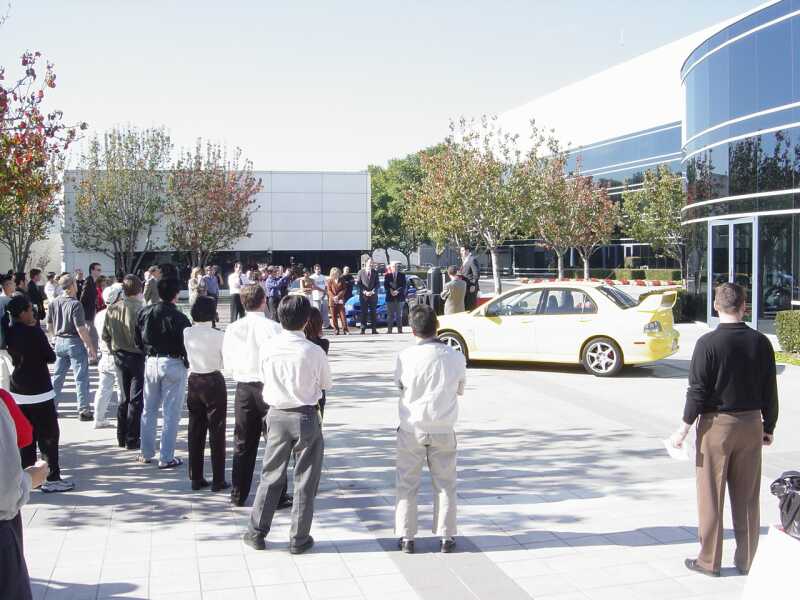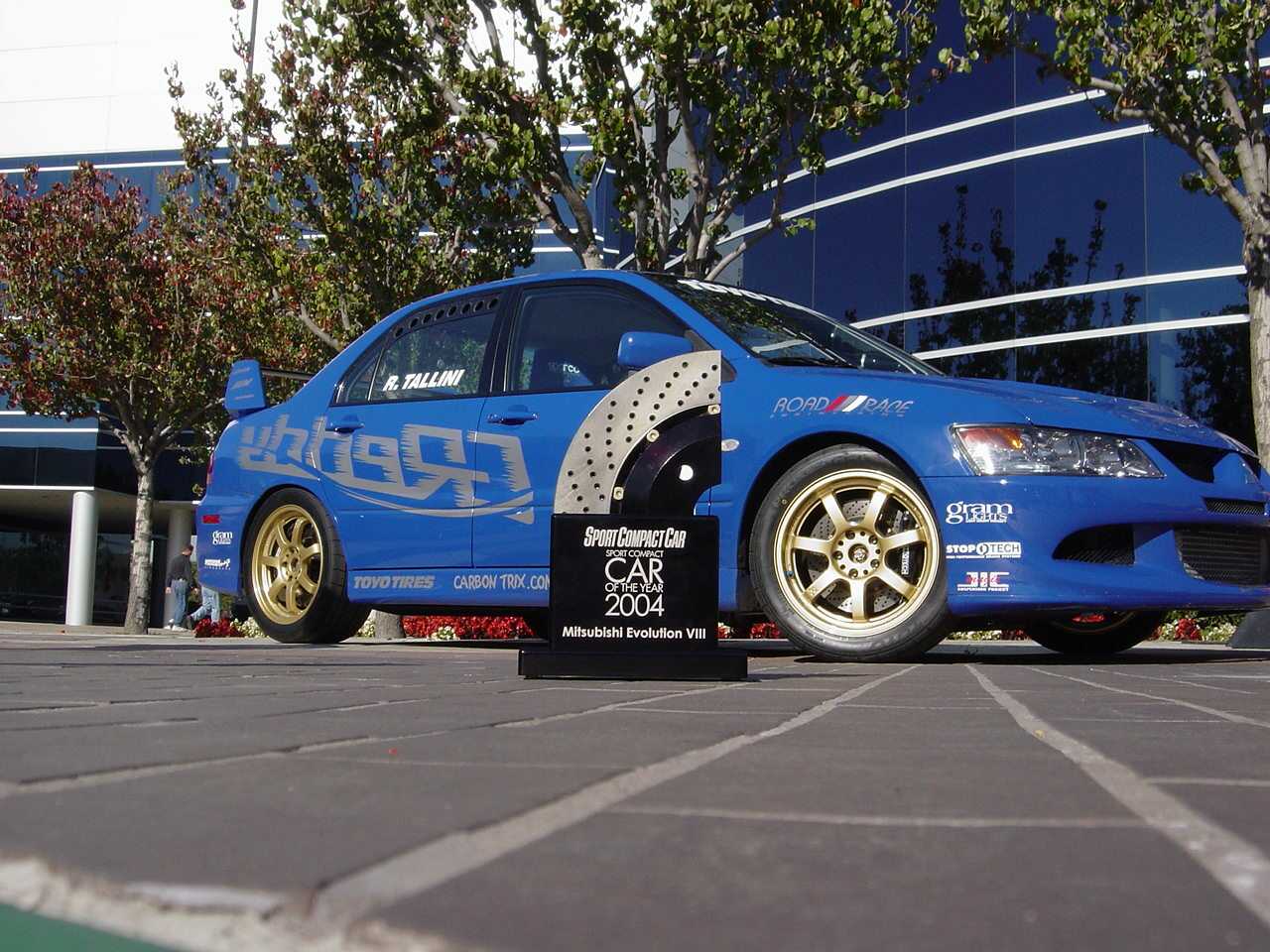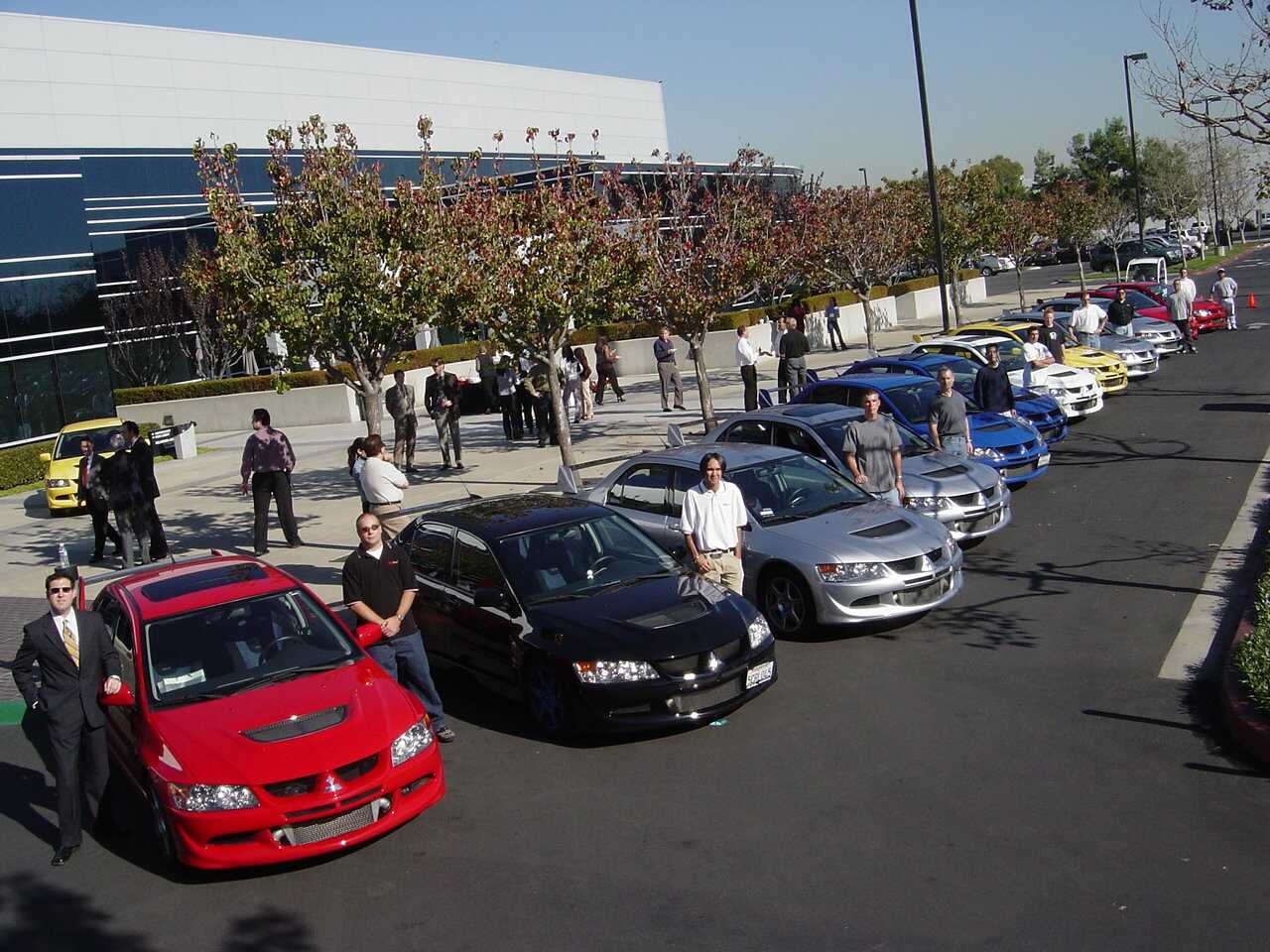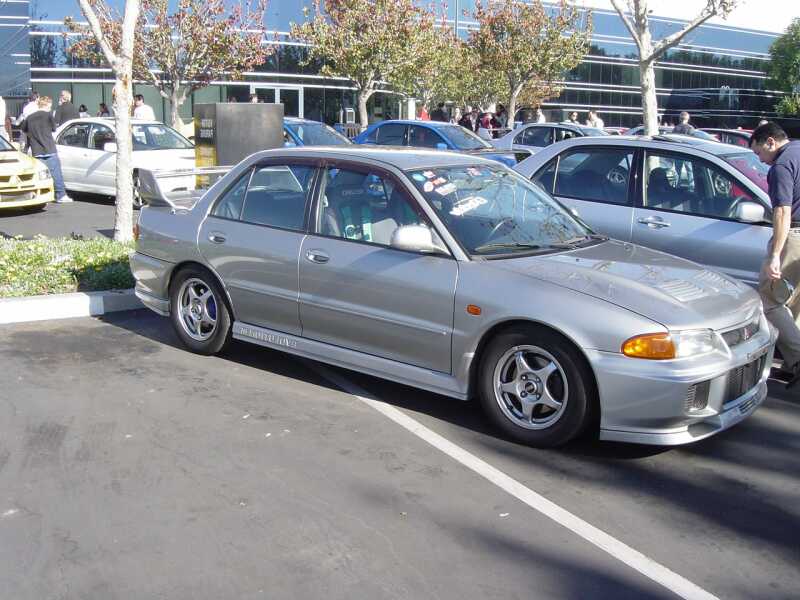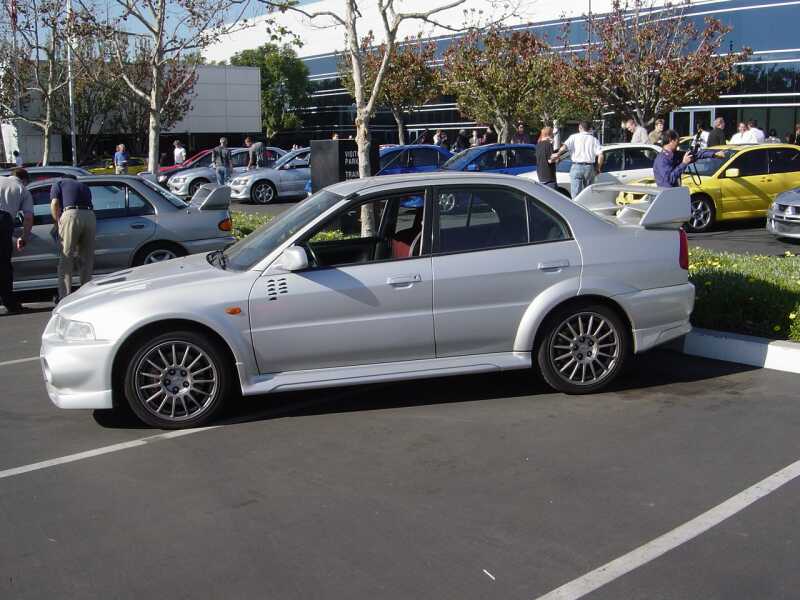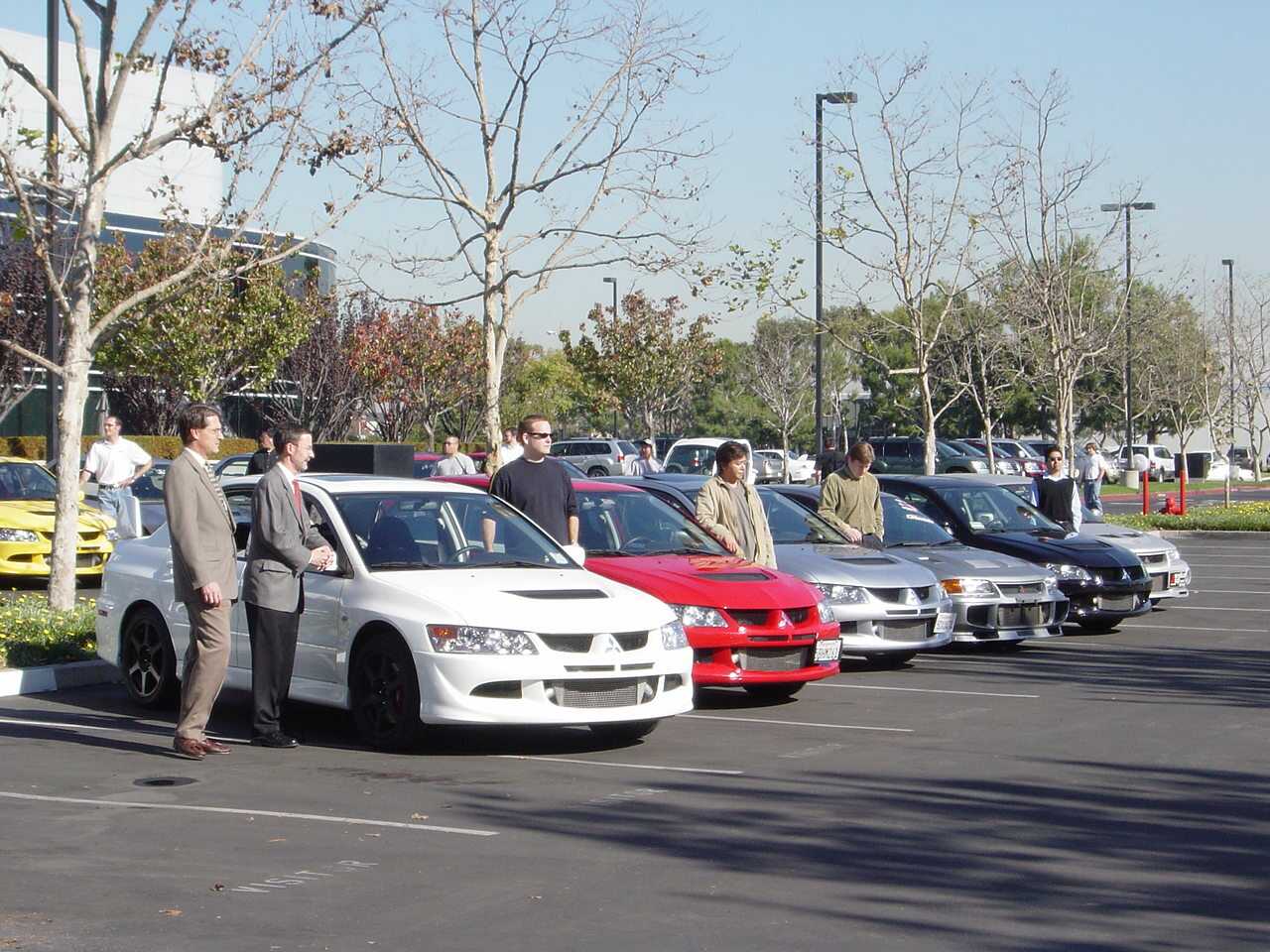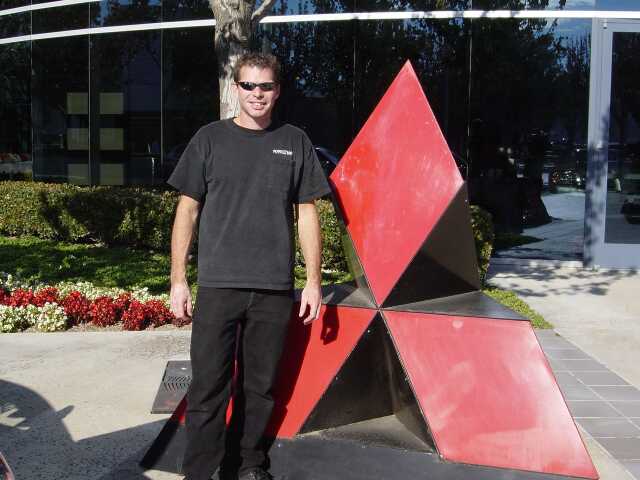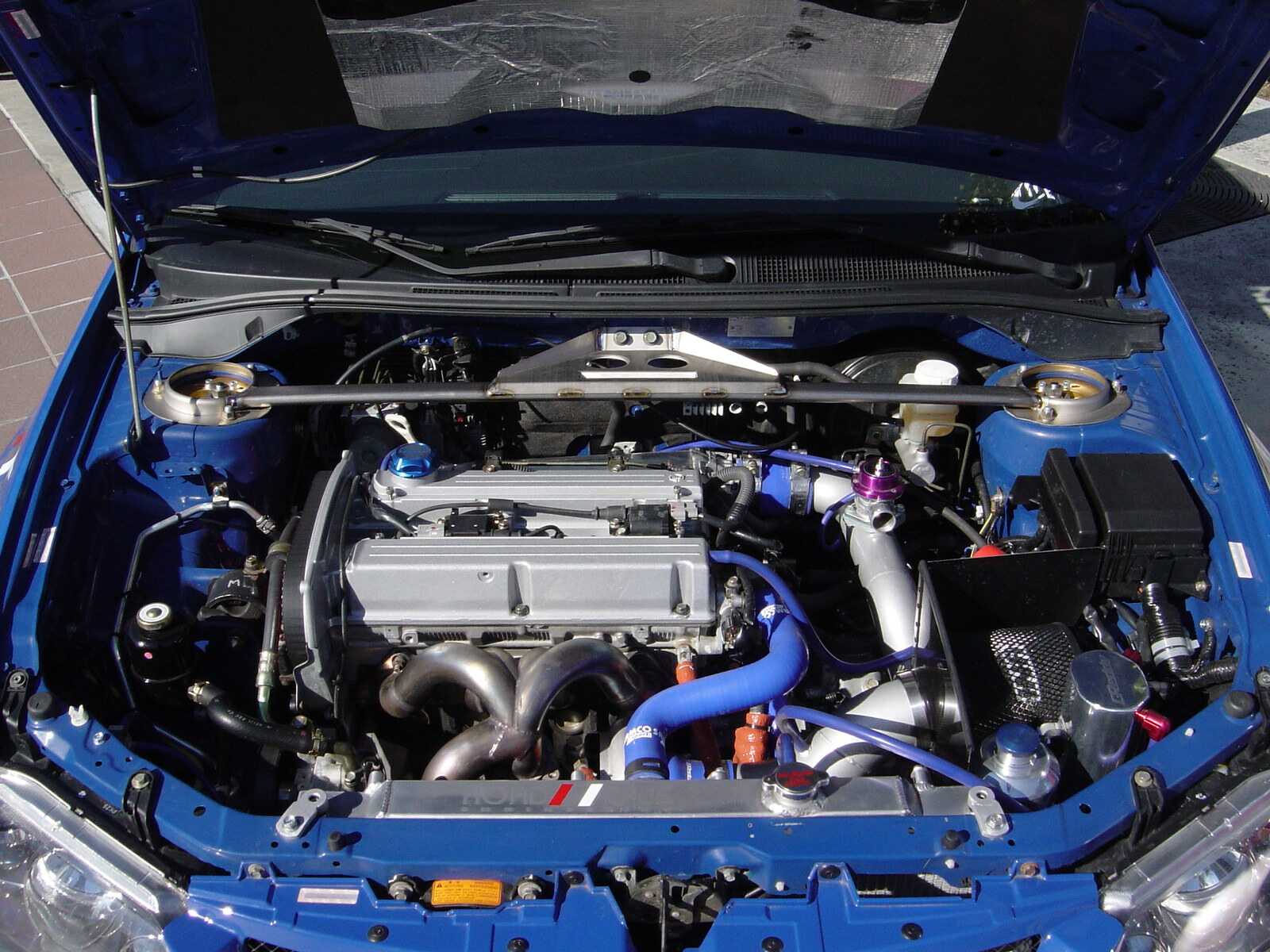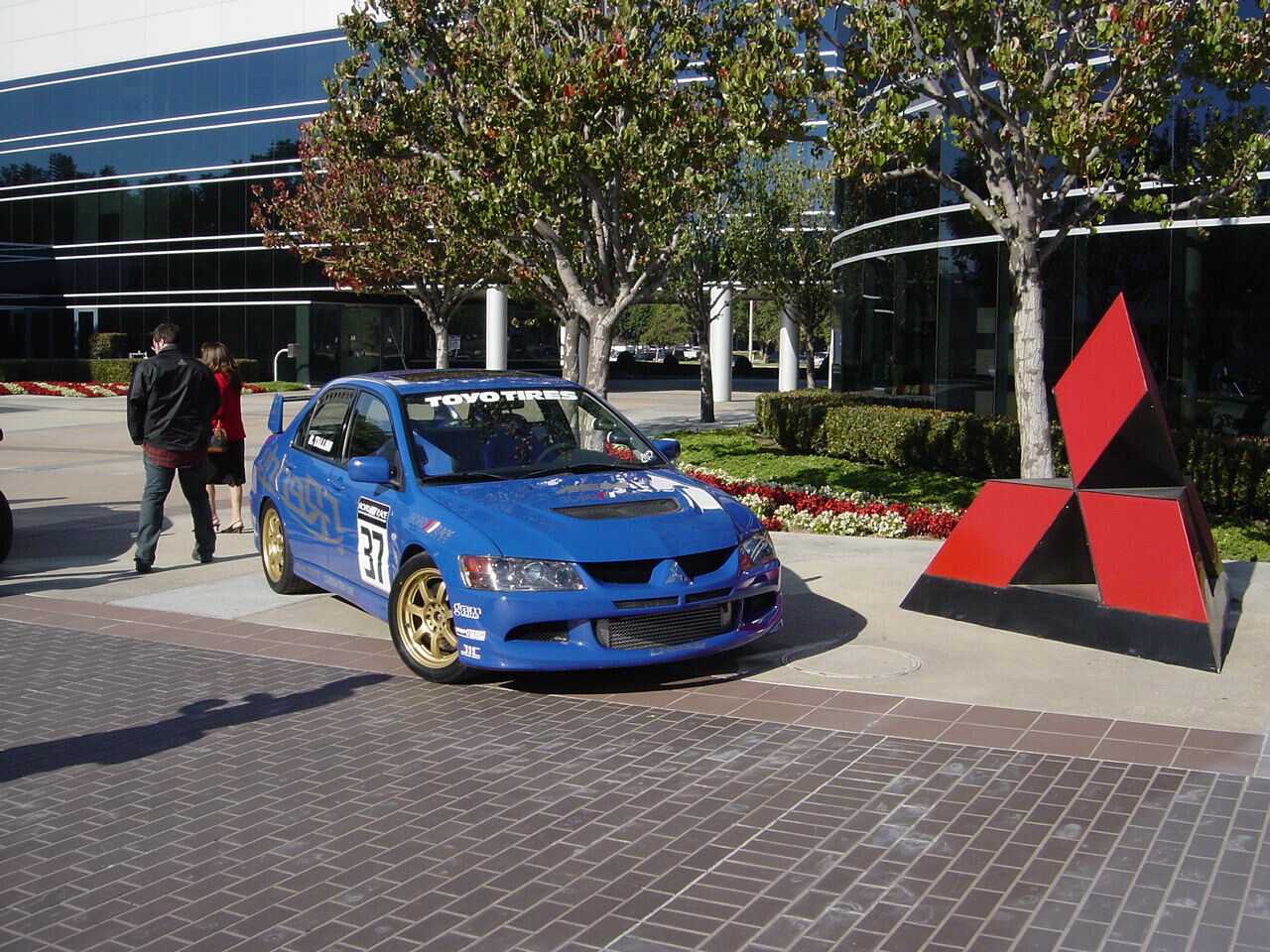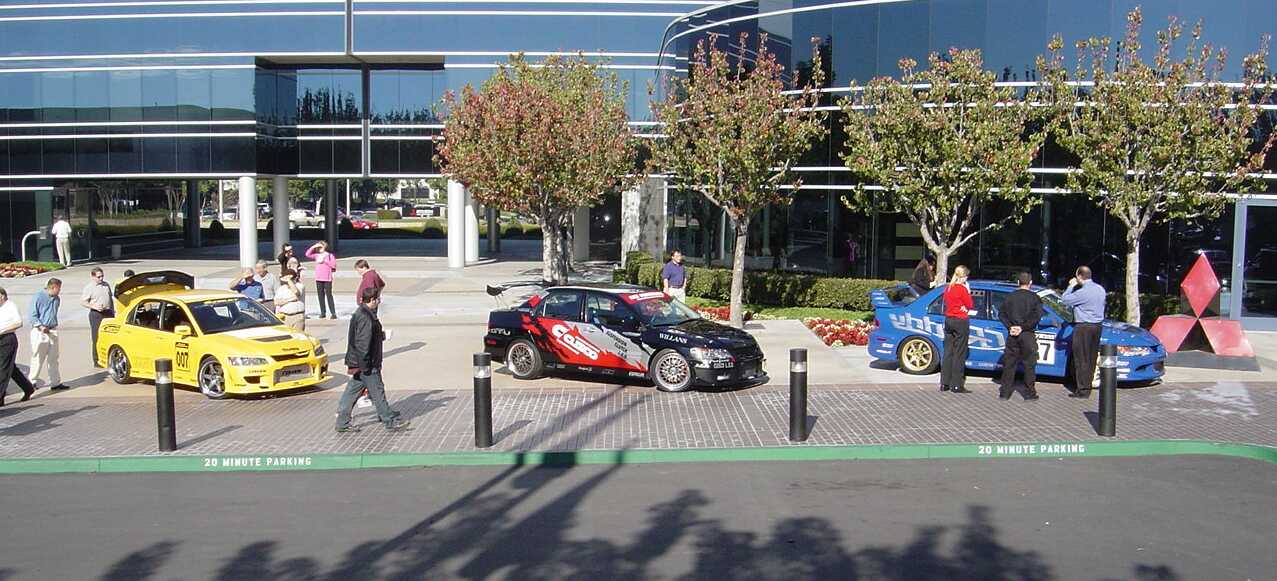RRE EVO 8/9 Stealth Exhaust Dyno Test
The RRE Stealth Exhaust for the EVO 8/9 occasionally gets picked on by haters for being restrictive. Threads come and go with speculation. The standard RRE Stealth cat back uses straight through perforated core resonators. These do not restrict anything. We use very mild angle mandrel bends and a large straight through Magnaflow stainless steel muffler. There are a few people out there that ask for the more restrictive louvered core resonators that would cost you a few hp depending on how much hp you are making.
In this thread I threw down the gauntlet.
http://www.socalevo.net/forum/index.php?topic=80224.0
———————Quote from: sxe_davexxx on June 22, 2009, 06:09:58 PMThe RRE stealth exhaust is overrated… Its super heavy, you’ll loose power significantly, and it is not that quiet.You should try the Cobb exhaust or the——————–Quote from: Mike W on June 22, 2009, 05:54:22 PMWould you like to prove what you are saying? I will help you.Back it up or take it back.mike@roadraceengineering.comI will give you my cell phone number and we can work out the details of “significant” and when and how to dyno your car at no charge to you.
MiKe W
——————–Quote from: sxe_davexxx on June 21, 2009, 12:03:55 PMEmailed, awaiting your reply =)
Sexy Dave was nice enough to volunteer his car and his buddies and he did the parts swapping on the dyno. He has a nice running stock turbo EVO 9 tuned by Bryan @ GST on E-85. The car us using ECU boost control. His exhaust is an RSR X-Mag. It is very loud and growly no resonators and a straight through small body muffler.
Dave brought his car by on a Saturday afternoon and we did some baseline runs.
Not bad at all, especially for how stock he has things looking under the hood. Boost was smooth with a peak of 27 psi and finishing at 20 psi at redline. The first run was a little peaky with the hp, with the car warmed up hp stabilized at 388-389 hp and ~370 ft pounds of torque.
Then Dave and friends swapped out the loud RSR exhaust for the RRE Stealth.
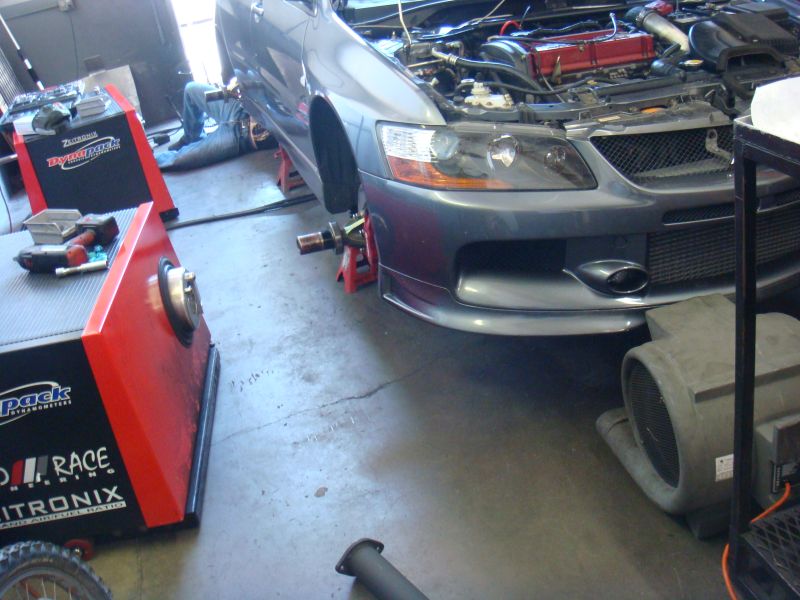
We went to make some pulls on the RRE system.
Again the first pull was a little choppy. But once warmed up it was making consistently higher hp pulls.
Over 400 hp now and peak torque was up too. Boost was a little choppy but not surprising considering that it was tuned for the other exhaust system. Interesting was that boost dropped off with it making more hp. Shows that the RRE exhaust actually flowed better than the RSR :-P
So here is the RSR (thin lines) vs. RRE Stealth (thick lines)
Boost, again RSR (thin lines) vs. RRE Stealth (thick lines)
And for fun the two wild card first runs of each exhaust, RSR thin lines, RRE Stealth thick lines.
Here is a video of the two dyno runs. IT just further prooves how internet sound clips are totally worthless. The little cameras we all use to make these has self adjusting/limiting microphones. You can hear the idle difference in the RSR. But at WOT they sound essentially the same. In real life the RSR was ear splitting on the dyno. The RRE was just loud.
Any questions?
New Tuner @ RRE
Bryce has been tuning for a while here @ RRE. He is just now up on all the latest XML for Little Tikes, Fisher Price and Step-2 vehicles. Hit him up if you want to set up an appointment. Afternoons are out for naptime of course. Here is a video of him getting the last power out of the Cozy Coupe. The Dynapack lets him check part throttle and get the fuel trims all dialed in nicely.
RRE @ Mitsubishi Owner’s Day – July 2009 – Videos!
Sam tuned Hugo’s (from LA DSM) 1990 GSX to 530 whp for 2nd Place in the dyno contest:
AMS did a couple demo pulls with their big hp drag EVO.
Mitsubishi’s Video:
AMS Drag EVO on the RRE Dynapack @ MOD 2009
At the MOD/RRE Dyno Shootout this year AMS put their drag EVO 8 on the RRE AWD Dynapack chassis dyno for a couple exhibition runs.
They had previously run 1130 whp on a Mustang dyno limited by wheel spin. Martin Musial from AMS did a couple warm up runs at low (37 psi) boost and only hit 900 whp :-/ Then with it all ready to go and a rev limit set at a low 9,500 rpm he did a full pull. Here is a video from it:
The external wastegate blows straight down. In the video you can see everyone running and jumping from the molten asphalt blast debris. The car blew a crater in the parking lot running 1180 whp at 770 ft lbs of torque!
The dyno chart at low boost and high boost:
And for a little perspective… here is the 1180 hp run laid up against a nice running Cosworth 2.2 with a GT35R turbo:
Suddenly 600 whp looks… well kind of sad. For really sad here is 1180 vs a stock EVO:
Congratulations Martin, nice work!
Stinger Plug Wires!
“Hey mister.. why is my car missfiring?”
Must be those Stinger Brand plug wires you got there :-P
RRE At Your Local Library
WINTER TIME!!
Cozy up to the fire in the cold California heat with a good book!!

http://www.amazon.com/Mitsubishi-Diamond-Performance-TuningHP1496-Hands/dp/155788496X/ref=pd_sim_b_3

EDMUND’S Project EVO X [Part 1]

To find out just how much power Project Evo, our Long-Term 2008 Evo GSR, currently generates, we went to someone who knows these cars.
To find out just how much power Project Evo, our Long-Term 2008 Evo GSR, currently generates, we went to someone who knows these cars.
Road Race Engineering has been working on Evos since before they were sold in the USA. And they’ve been building, racing, tuning, modifying and repairing 4G63s since 1994. You could say they know a thing or two hundred about how to make Mitsubishis go fast.
In Road Race Engineering’s huge 6,000 square foot facility in Santa Fe Springs, CA, they got to work. Project Evo’s wheels came off and the four Dynapack hub dynos were carefully bolted on.
Then we fired the engine, warmed it up to operating temperature by “driving” at light load and did a few pulls.
Now, before we go any further, it’s important to remember that not all dynos are created equal. Comparing results from different dynos is a fruitless and deceptive exercise. Even if you test the same car on two different dynos on the same day, the results can be all over the map.
In fact, we’ve already done that exercise with a GT-R.
Since you just clicked that link and re-read the test, you know only to compare results from Road Race Engineering’s Dynapack dyno to other runs made on that dyno. A dyno is a tuning tool, not a manhood-measuring device. Focus on the gains rather than the absolute numbers.
Whew, okay. Back to Project Evo’s baselining exercise.

We did four or five pulls and the peak numbers were about 320 lb-ft and 325 horsepower. I say “about” because the run-to-run variation floated a few hp or lb-ft higher or lower than these values. I’ll post a representative dyno chart once my latptop starts cooperating.
Mike Welch, owner of Road Race Engineering, says that bone-stock Evo Xs typically generate about 250 horsepower on this dyno.
Factor in your favorite guesstimate for drivetrain loss based on all of this and we can see that we’re roughly 65 horsepower shy of our power goal for Project Evo.
So, now what? With a decent complement of bolt-ons, the next logical step is cams. We talked with our friends at Cosworth in Torrance and they handed us a set of Cosworth MX1 cams, which Road Race Engineering graciously volunteered to install and re-tune for.
More to come.
Jason Kavanagh, Engineering Editor @ 15,851 miles.*
*we drove two miles on the dyno.
License Plate – 4G63 AWD
Got a cool license plate in the e-mail today. Thanks Rick!
Here is the note that came along with it:
Hello, my name is Rick S’ I have had this plate for about 2 1/2 years and have had a RRE licence plate from since I bought my first DSM. I got first licence plate frame when I bought upper intercooler pipe back in 2001 just after I picked up a Black 90 GSX. I loved that car, but I always had a thing for the least appreciated of the triplets the Laser. A friend of the family had a Red 92 Laser RS AWD, with 72,868 on the odometer in 03, they were going to trade in for a new lease car. For a few extra bucks I offered them more then the $2,000 dollar trade in they were about to take on it, and I drove away with a car that once debadged of it’s “TURBO INTERCOOLED” and “ALL WHEEL DRIVE” stickers no one would have a clue about what it’s potential. It’s gone through 2 engines, 3 trannys, and a couple of turbo setups; but I will never part with this car. This is kind of a long winded message just to get a picture of my licence plate, but you guys were there for these cars in the beginning. Even though these cars continue to get up there in age I know this company with always be there, if not for this car, but for cars following in it’s steps.
Rick S
Lydia’s Crown Vic vs The RRE Dynapack
Lydia’s 85 Ford Crown Victoria was on its way to the crusher. It had led a long and productive life taking grandmas to the market and was continually needing one more $500 repair to this otherwise ok condition $500 car. Gas prices being at $4.00 a galon too didnt help.
After considerable thought, we held a raffle/pool on So Cal EVO to guess the time it would live at full throttle with no oil and no coolant on the dyno. Winning time 7 minutes and 29 seconds!
Russ Taylor EVO 8 – Schooled Magazine
From Schooled Magazine September-October 2008 Issue
Over the next few issues, Schooled Magazine and Road Race Engineering (RRE) will take a stock 2008 Mitsubishi Lancer Evolution X and perform some serious modifications to show you what you can do to enhance your vehicle. This issue I hung out with the RRE crew as they modified the performance of the vehicle. By Russ Taylor
Intake Challenge
When choosing an intake system it is important to consider airflow. The more airflow the engine receives the better it will run. To find the best intake system for the Evo X, we wanted to compare three different systems to see what would give the best gain. With the three systems-the stock intake, Injen Cold Air and AEM Cold Air Intake- Schooled headed to Road Race Engineering (RRE) located in Santa Fe Springs, California to get the dyno results on which system would give the best performance gains. The dyno is a system that measures horsepower (WHP) of the vehicle.
I met up with Mike Welch, the master tuner at RRE, who has been tuning Mitsubishi vehicles for over 12 years. He was the perfect person to handle the intake challenge for the Evo X. We started with the dyno run to find the base numbers to compare against. The dyno placed 248 WHP with no modifications done to the vehicle with the stock intake system installed. Now that we had a baseline to judge by, we were then able to compare the two intake systems.
We started with the Injen (www.injen.com), and the results were depressing. There was only a 2 WHP gain. Considering that the unit retails at over $400, this was definitely not a very good bang for the buck.
We then tried the AEM intake (www.aempower.com) which increased the vehicle with a power gain of 26 WHP. With the cost of the intake at $285, this was a huge gain for a low price. AEM’s engineers took a different approach and designed a power-producing enclosed airbox. The airbox is constructed from cross-linked polythene. AEM’s revolutionary DRYFLOW synthetic performance air filter is the first cleanable, reusable performance air filter that does not require oiling to filter and trap dirt.
Even though the Injen unit looks considerably nicer with polished pipes than the AEM intake, the 26 WHP gains made our choice obvious- to go with AEM for the project.
Custom Fabricated Exhaust by RRE
To help with the airflow for the vehicle, RRE made a custom fabricated exhaust system. Art Thavilyaei, one of the RRE crew, pieced together what later would become a custom fabricated dual exhaust system.
RRE decided to use 3” piping going into dual 2.5” piping for the rear section, and the process was amazing to watch. They start by removing the stock exhaust system. A jig is used to hold the new piping in place as measurements are taken and airflow is considered. Once each piece is measured, it is then cut, ground, and welded in place with the use of the jig. Each bend and weld in the exhaust system potentially decreases the amount of airflow from the engine. Art took his time to ensure that the end product would produce the greatest amount of airflow from the vehicle.
After several labor-intensive hours, Art finished with the placement of the exhaust system only to have to remove the entire exhaust to perform the finishing welds. He completed the welds to perfection, and he placed the finished exhaust on the EVO X. Mike ran the car on the dyno and saw a 17 WHP gain over the stock exhaust. The total cost for the exhaust system like this from RRE is $650. It gives the vehicle solid power gains and sounds a lot nicer.
With the AEM Cold Air Intake and the custom fabricated exhaust by RRE, we saw a total 45 WHP increase on the vehicle. “The best bang for the buck is the intake and exhaust,” says Mike. With a total of 45 WHP gain, Schooled Magazine would have to agree.
In the next issue Mike will perform a custom tune and will add some additional performance parts to get the most gains possible out of the Evo X. You don’t want to miss the next issue of Schooled!
Joon Maeng – Formula D – Portland International Raceway
The S-Empire/RRE Nissan S13.5 ran with Formula D at Portland International Raceway from July 25th-27th. Joon ran with Chris Forsberg, Tony Angelo, and JR Gittens. On Saturday Joon gave a ride along to one of the P.I.R. staff and she had a good feedback. It was a successful event!
Joon will be attending the Formula Drift Monterrey Mexico Competition next with the S13.5 on August 22nd-23rd. We are upgrading the turbo and getting prepared to have a powerful and reliable drift car for the Formula Drift Mexico event. The S13.5 will be loading in the F.D. Rig on August 13th.
SHAKEDOWN!! Rob Tallini driving the RRE 4G GT Eclipse in the RTA at Auto Club Speedway
July 20th, 2008- Road Race Engineering/Motorsports finished 3rd in the FWD Class at Redline Time Attack, Auto Club Speedway–Fontucky, CA. This was the debut of the Road Race Mitsubishi Eclipse Time Attack Car.
[This is a picture of Tallini driving really fast. Notice the blurriness of the background.]
Joon Maeng – Team Drift
Here are some picture from Performance Nissan Show presented by HKS at the Orange Show Speedway on April 5th. The RRE S13.5 was presented and was performing drift demos that day for Formula Drift.
The other pictures are from this past weekend @ Formula Team Drift Competition. The RRE S13.5 was presented from April 16th through April 20th. Joon had drift practice on Thursday until Saturday. Sunday was competition day. As a 3 car team for this competition, one of the car (Z33) was out because of mechanical failure. We did our best as a 2 car team, ( Robbie Nishida and Joon) but were deducted points for having only 2 cars.
Joon Maeng – Formula D – Passed Tech Inspection
Joon passed the Formula Drift Pre Tech held at Super Autobacs. We displayed the vehicle from 9 A.M. -6 P.M. Here are some pictures.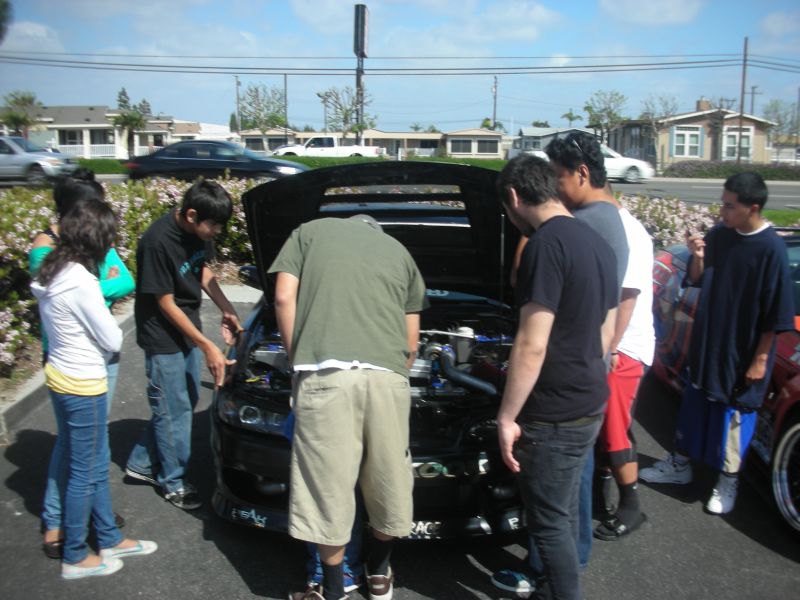
License Plate – 12 Seconds
Romel De La Cruz from Florida sent in this pic of his license plate from his 98 Eclipse GS-T. Welcome to the 12 second club!
RRE EVO – Import Tuner Magazine
Nine Lives – 2003 Mitsubishi Lancer Evolution VIII
Not all Lancer Evolution VIIIs made it into public driveways. Some were destined for other fates, the most common of which being something we journalists know intimately as “press car” status. In most cases, press cars are destined to be crushed after their short test phase, because they are released before seeing approval from the Department of Transportation and the EPA. It sounds like a sad story, but really you’d be hard pressed to find a rental car as abused as most press cars are.
Think about it. These things are driven by hundreds of different people for one week at a time, with no concern whatsoever for break-in miles, warm-up time or anything else of the kind. If you think the Evo on these pages has ever slowed for a speed bump or been rubbed with a diaper, you are sorely mistaken. Press cars age in dog years. A press car with 20,000 miles on it is already gone. That’s not to mention that this particular press car started life in rainy mainland Malaysia and went on to a career in racing before evolving into the wide-body race car you see before you.
So you’re looking at an anomaly-the press car that just won’t die. Not because it hasn’t wanted to a few times in its life, but because it’s had too many Dr. Frankenstein owners force it back to life when all it wanted to do was call its long career in. In the hands if its current owners, Road Race Engineering (RRE) in Santa Fe Springs, Calif., it won’t be facing its demise in the jaws of a metal junkyard monster any time soon. According to RRE’s Mike Welch, “We don’t get rid of cars, we race them until they reach the end of their life cycle, then we own them some more.”
This Evo VIII started life at RRE as a race car back in 2003. This isn’t your typical story of a car that started small and moved on to the big modifications. The car had barely been in the RRE garage for a week before stock parts were torn off. The stock turbo was ditched in favor of a GReddy turbo kit and front-mount intercooler, while the factory suspension was tossed and replaced by a system from JIC. A four-wheel big brake kit from Stoptech with four pistons on each caliper and 355mm rotors all around got the party started right. Finally, a custom sheetmetal intake manifold from Magnus helped to increase airflow into the engine.
But as the American Evo aftermarket developed, Road Race Engineering was afforded a larger list of specialized components from which to choose. In addition, RRE developed many custom parts itself, like a cast turbo manifold-less prone to breakage than a tubular unit. The GReddy wastegate was exchanged in favor of an external unit from TiAL, while the GReddy Type-S blow-off valve was left to vent into the atmosphere. Intercooler piping leading to the GReddy core was replaced with a custom set from RRE. While Road Race was fabricating, it belted out a custom downpipe to guide hot air out of the turbocharger and into a Magnaflow exhaust. Being as inventive as the guys at RRE are, a Subaru up-pipe was used on the other side of the turbocharger and a custom intake was quickly fabbed up.
The turbocharger would be blowing boost into a 2.4-liter engine, machined out by Millenium Motorsports in Temecula, Calif. Before the new block was bolted to a Cosworth head, forged Wiseco 9:1 pistons were installed on top of forged Eagle H-Beam rods to keep the bottom end from turning into a boiler room for hot metal projectiles. The rods were then fastened around a balanced and counter-weighted crankshaft using ARP rod bolts.
The aforementioned Cosworth head seems to be the hands-down choice for all who race Evos. Maybe that’s because the only work teams have to do is unwrap the cellophane, bolt it on and race. It comes with a 272-degree camshaft for both the intake and exhaust sides of the valvetrain, stainless steel polished and oversized valves and polished combustion chambers. The valves stay seated with proprietary valve springs and retainers. Finally, a pair of cam gears from AEM was added to regulate valve timing events. Cosworth also clearanced the stock oil pan and a Setrab oil cooler was installed to keep temperature down during long race days in the California desert.
To keep the race car reliably fueled, RRE turned not to the aftermarket but to a car that has been on race tracks since the ’60s in some form or another, the Porsche 911. In this case, the Evo employs a Bosch external pump from the vaunted 930 Turbo in conjunction with a Denso internal pump, which in tandem provide fuel to a set of RC Engineering 1000cc/min injectors.
Since this Evo was built before the days of the American Evo RS, it was absent a limited-slip differential up front. RRE remedied the loss by installing a locking LSD from Quaife. To ensure all the power made it to all three differentials, a clutch and lightweight flywheel from Quartermaster were used.
Peak Performance of Lake Forest, Calif., teamed with Advanced Suspension Technology (AST) to provide a set of competition coilovers, while RRE teamed up with Progress Suspension to create the kind of anti-roll bars an all-wheel drive car equipped with copious amounts of rubber would need to rotate on the track. The rear bar measures 27mm in diameter.
The massive rubber comes in the form of 335/30/18 Toyo Proxes, wrapped around gargantuan 18×10.5 Enkei NT03+M wheels. Because of the APR wide-body kit, the wheels have a 25mm offset, something otherwise uncharacteristic of cars coming from the island of Japan.
Inside, Racetech carbon-kevlar seats occupy an otherwise lonely cockpit-stripped and roll cage equipped in-house by RRE. Carbontrix stepped in to add firewall and floor panels, but only because they serve a purpose on the racetrack. You might care about a good audio system, but the guys at Road Race couldn’t care less. To our “sound system components” question, they simply responded, “Magnaflow 3-inch exhaust, no interior.”
This thing was built to go fast, not impress the girl on roller skates at your local Sonic. And go fast it does-driver Robert Tallini has already taken home the gold at the ’04 FIA Mexican Championship (Open Class) as well as the Redline Time Attack in Fontana, Calif., (Overall Winner). If there’s such a thing as a car having nine lives, this one wrote the book. It’s been rebuilt more times than we can count and it’s attended SEMA as many years as the Evo has been alive in the states. Thanks to Road Race, it doesn’t look like it will be disappearing off the scene any time soon, either.
RRE and Friends Racing in Tijuana on Univision
A short story for Univision in Mexico on the road racing border series that we often run in. Mike W in the #37 Eclipse GST and Jason Steiinhart in the #15 Eclipse GSX get some good screeentime. Incar footage in Mike’s Eclipse.
RRE’s 4G 2006 Eclipse Corner Weights
We had an opportunity to check some corner weights on the new Eclipse. You have heard that this is a heavy car, it drives like a heavy car… well guess what? It is a heavy car :-P
This GT is a non-sunroof regular stereo model and had a half tank of gas.
Side to side balance is pretty good but it is 63% of the weight on the front.
Put a 200 lb driver in the driver’s seat :-P
Curious as to what some of the individual parts weigh? How about 43 1/2 lbs of A/C parts.
The door window assembly, 25 1/2 lbs
Mostly gutted out. Lighter but still a big pig.
Out of curiosity we weighed a stock non power seat. EEeek! 54 lbs.
Why is the 4G Eclipse so heavy? Safety. The Eclipse shares the base platform with the Galant and the Endeavor. This combined with the newer side impact safety regulations give you the stiffest and safestEclipse ever made. The chassis is thick and double walled just about everywhere. Every support and brace is as thick as a frame rail. On older Eclipses these inner braces and supports were half as many and just thin Sheetmetal. Add in something like 8 air bags too. Then the boat anchor 3.8 liter steel block and you got your 3600 lb car.
Whopsssssshhhhh!! RRE Shop EVO 8 gets famous in Greece’s “Street Racer” Magazine!!
Street Racer magazine sent Jay Canter to the shop a couple months ago to get some pics of our shop EVO 8 race car. It just came out in their August issue! We went to the closed refinery down the street and took some beauty shots and also ran the car through Turnbull Canyon for some driving shots. Here is how it turned out. What’s it say about the car? Who knows. It is Greek to me :-P. -Mike W.
If any Greek readers out there can translate this for us, a prize will be awarded. Meanwhile, I have done my best to translate through using my otherwise useless Philosophy degree. -James Singer
[click on these smaller images to GO BIG!] (more…)
Toxic Photoshoot! RRE EVO 8 Race Car gets shot!
A Euro magazine sent Jay Canter to the shop recently to get some pics of our shop EVO 8 race car. We went to the closed refinery down Lakeland Rd asked if we could get in to take some pics with the freaky background. With a little begging and a lot of convincing that we wouldnt be doing donuts and generally causing a hazmat response – we got in. After we took some beauty shots, we ran the car through Turnbull Canyon for some driving shots with the car moving.
Looking forward to see how it turns out. I can shoot over the shoulder of these pro photographers all I want and… well with them being professionals and all, my pics look amateur for some reason :-P
Here are my point and shoot pics:
Greg Collier – 1G Eclipse GS-T – March 12-13, Race Report
By Greg Collier – Diary of first NASA race of the season at California Speedway.
NASA Pro-Racing Season Opener At California Speedway March 12-13
It was a sunny 80 degree southern California day when arrived at the track on Friday morning. We got situated in our garage space and got ready for our annual tech and then do some track testing. This being the beginning of the race season an annual safety inspection of the car is necessary. Technical inspectors check the roll cage configuration, tube thickness and approved padding, dates of fire extinguisher and or fire system, SFI approved drivers suit, shoes, socks, gloves, all in case you have a car fire, 6-point seat belts and window net which have to be replaced every 2 years since Dale Earnhardt’s accident. Then they start on the vehicle inspection checking wheels/tires, steering/suspension, and engine for fluid leaks, no anti freeze, overflow containers, battery secured, so-on and so-forth. You’ve got two or three guys checking every nut and bolt for about 15 minutes. You get your race log-book signed and you’re ready for the season. At any time in the following races of the season they can do a surprise inspection to make sure you didn’t change anything. If they find something you’ll get fined $ and until you pay the fine and fix the problem you can’t race.
With our tech complete we took the car to our garage space, gassed it up, checked the tire pressures, and waited for our track time. We were scheduled for (4) twenty-minute sessions starting from 1-PM that afternoon.
I took the first track session pretty easy. We had just installed new Stop Tech brakes the day before so we had to do a rotor and pad seating procedure. I ran a couple of medium warm up laps so I didn’t have to brake that hard in the turns. Then I ran 3 laps pushing harder each lap until I brought the brakes up to racing temperature. I ran a cool down lap and brought it back in the garage not touching the brakes at all. When your breaking in new rotors and pads if you keep your foot on the brakes after you heat them up you’ll embed the pad on the rotors. I don’t even want to go there…………
While in the garage RRE’s Scot Gray, the wizard of EMS tuning, plugged his lap top into my AEM and made some critical air/fuel and idle adjustments before our next session which was an hour from the first one.
California Speedway Grand AM road course configuration is a 2.8 mile, I’m going to call it 14 turn very high speed race track. Top speed for me on this track has been around 160 MPH. You pick up speed on the front straight and take turn 1 on the oval fairly high, as you approach turn 2 you want to shoot down towards the bottom of the track and sling shot out on the back straight setting up for turn 3 that puts you onto the infield road course. So basically you’re going from 160 MPH down to about 40 MPH to make a hard sharp left turn then hard sharp right turn. It’s so cool!
After going through turn 3 and 4 you have a small straight that approaches a left hand sweeper. I usually start wide on this turn then pull a tight apex on the other side and sling shot way wide right onto another little straight. Pedal to metal you come up to a little quick left and right then hard braking into a very tight right hander (35MPH). Full throttle through a cork screw down a very fast straight away under the Toyota bridge to a ball busting, flat spotting, spin out, sharp right hander which is the beginning of very slow S’s. Once you make it through the S’s it’s a balls out almost right handed power drift back onto the ovals front straight. You immediately feel the down force from the incline of the oval and your instinct is to floor the accelerator pedal. It’s like you knew if you had wings you’d be taking off over the grandstands. It’s frigging awesome!
I ran my 3 other practice sessions with about 30 other cars, flat spotted a brand new Hoosier tire at the ball busting turn just before the S’s, and got the car dialed in for Saturdays qualifying and race. All in all it was an excellent test day.
My Competition
Because my car has so many modifications I run in the Super Unlimited class. This class is usually made up of the biggest, badest, fastest cars in the field. Vision Racing brings their “Rolex” series 996 500 HP and 800HP twin turbo Porsches. There was another “Grand AM or Rolex” series Porsche, a yellow custom fiber glassed body full race 911 SC pushing about 350 HP, and a new twin turbo Nissan Z who won a past SCC time trial. Now we’ll get to the fast cars, next to me in the garage was 2300lb. 750 HP tube framed Corvette Z06, a “Trans Am” series 700 HP Mustang Salleen, and lets not forget about Johnny Pag’s fleet of Ferrari’s, but he only drives one at a time. So this puts my race group at a total 9 cars.
On the track at the same time for this particular race event are the NASA “AI” (American Iron) series and the “CMC” (Camaro-Mustang Challenge) see www.americanironracing.com . These are fully race prepped, slick tires, 350 to 400 HP good ol American racecars. These two race groups include about 28 additional racecars on the track at the same time. This put the total field of cars racing at 37.
Race Day
We woke up to a cold, foggy, and drizzling morning. We got to the track and prepared for a warm up session before qualifying later in the morning. Because the track was wet and foggy we took 6 laps behind a pace car. It was kind of a waste of time but you new your car running.
Qualifying
It was 11 AM and time for qualifying. Because there’s so many different race groups running the track the same day your entire race group qualifies on the track at the same time. You get 20 minutes of track time to do your fastest lap, and that includes passing slower cars in the process. I did crappy in the “Super Unlimited” class running a 2:01 which put me 9th and last in my starting position and I think 14th overall with all the other cars on the track.
Race
After a drivers meeting where we discussed good sportsmanship (no dive bombing or spinning your competitors out), we prepared for our race. It was 3 PM and cloudy so track temperatures were ideal for our engines but less then perfect for our tires. I strapped in my car with my Hans devise, seatbelts drawn tight enough it’s hard to take a real deep breath, window net up, motor running and showing good oil pressure, EGTs, and solid boost pressure. I drove to pre-grid where we set up in our starting order for the race. This particular day we were having 2 rolling starts. The “Super Unlimited” group would go first then the “AI” and “CMC” would keep about a hundred feet behind us and start second with two separate green flags.
We pulled onto the track behind the pace car with its lights flashing blue, at about a fifty mile an hour pace. We scrubbed our tires to get built up tiny bits of melted rubbing off, then speeding up and braking hard to get some heat in the tires. We did a full lap behind the pace car through the road course coming up to the front straight on the oval. The pace car pulled off and we tightened up our nine-car group waiting for the green flag to be dropped.
A flash of green (I was in 3rd gear) and we were off. The field of cars began to spread out with the Rolex Porsches taking an instant lead. I passed the fiberglass bodied 911 (also yellow in color) and turn 3 onto the road course came up real quick. From that point it was a blur of concentration. The constant shifting, braking, turning, accelerating, checking your mirrors, checking your gauges, oh yeah, looking where you’re going all seems so mind-boggling. How cool is that?
The races are timed sprint racing. That means its balls out for 45 minutes straight. Your car screws up, you blow a tire, you spin out, you lose. The only way you become a descent driver is seat time. Practice, practice, and more practice. But what a great way to learn!
Back to the race: I got passed by two really loud 400HP Mustangs. I know the drivers in both cars are racing school instructors. I’m not making any excuses but the last time I drove my racecar was four months ago and my daily driver is a Dodge Ram V10 2500, 6600lb. truck. Anyway, it’s about the middle of the race and I’m learning how to use my new Stop Techs. I can now brake at 25 feet before a turn where it used to be 50 feet. I’ve got that yellow 911 Porsche on my ass the whole time. It was lap 10 and I doing about 110 MPH on the small back straight coming up to the S’s before the oval when I lock up my brakes and flat spot my front right tire. I kept it under control but now my front wheel is bumping like a sewing machine.
I get out on the front straight of the oval and accelerate to about 140 MPH and I fell the car lifting off the track so I begin to feather the pedal. I’m able to keep the Porsche behind me and I’m still on low boost. I got onto the road course and continued to push as hard as I could. There’s nothing better then a little adversity to make you want to go faster, even with a flat spotted tire. All of a sudden the two “Rolex” Porsches lapped me but I see I’m coming up on the Ferrari. I make it to the oval and pass the Ferrari with that dam yellow 911 still behind. It’s 140 MPH again and the car starts to lift and I feather keeping my ground. Another couple of laps go by and I’ve lapped at least a half dozen Mustangs and Camaros when I see the white flag come out.
I’m not ashamed to say I was tired and beat up but I kept that yellow 911 at bay. It’s the last lap and I’m on the back straight of the oval going from 140 MPH down to 40 MPH when a Mustangs spins out right in front of me. He doesn’t make the turn and goes off the track and I lock up my new brakes and do a half spin on the track. The yellow Porsche goes by with two Mustangs behind him. I put it in first and do my DSM drag car impersonation and end up passing the Mustangs and get that dam yellow Porsche in my sights. The 911 made it through the S’s before the oval and I’m probably 75 feet behind. I hit boost 2 (like turning on a super charger) and was only 10 feet behind him at the checkered flag.
Oh man!!! It was a great race and I was friggen exhausted. But it’s the best kind of tired I could ever feel. We all pulled into the paddock area and parked out cars behind each other, got out, shook hands, and recapped the whole race with each other. They gave out trophies, took pictures with drivers and trophy girls, and we put our cars in our garages to get ready to do the whole thing over the next day. I’m hoping that’s what it’ll be like in heaven.
Results
Saturdays race I placed 6th in class ahead of the Ferrari, Corvette Z06, and the Salleen DNF’d. I took 10th overall with 37 cars running and was doing 1:56 laps. This will all be official when the AMB transponder results are posted on the NASA site.
Sunday race and results
Sundays race was cloudier and colder. With fresh Hoosiers on the front, the car ran great and I felt a bit more confident. I didn’t flat spot any tires and I beat that dam yellow 911 Porsche that hounded me the day before. The Salleen and Rolex series Porsches took one, two, and three. I placed 5th and I think 8th or 9th overall and I think my lap times dropped a second or two. Not bad for a 2.0 liter four cylinder engine against a bunch of V8’s and factory built European racecars.
Carnage
I flat spotted 3 new 275/40-17 Hoosiers down to the cords. Cracked my front splitter in half and tore up my front valance a bit. All easily repairable for the next race at Button Willow Race Park near Bakersfield Ca. on April 9-10. Oh yeah, the tube framed $250,000.00, 2300lb., 750 HP, Corvette Z06, blew up his engine and is looking at $50K to $75K rebuild.
I love my DSM…
Greg
Road/Race Engineering’s EVO 8 Weights
We weighed our shop car back when it was stock. Had about a half tank of gas in it. Regular options including the Biggee wing and a sunroof. Weights are without a driver.
Here is a new stock EVO 8 RS we just weighed (5/04) Full tank of gas. The RS comes stock with no stereo, no sunroof, very little sound deadening, no ABS, manual windows, but they do have A/C.
Those HID lights are cute and sure look nice at night. But that is close to 17 pounds you are carrying around hung out on the worst part of the car to affect handling.
EVO is SCC Magazine Car of the Year!
MMSA had a ceremony to mark the receipt of the Sport Compact Car magazine Car of the Year at the Cypress headquarters this last week. RRE was invited to bring our shop EVO race car along with a bunch of guys from www.socalevo.net. Basically anyone that could get the day off from work came out.
SCC Mag Editor Scott Oldham presented the award.
The RRE EVO 8 posing all hard with the award:
All the owners got to line up for publicity shots:
The Mitsu top brass were impressed with how many owners turned out at late notice on a work day. THey promised to do a better owners appreciation day later in the summer.
They even made us EVO and 3 diamond shaped cookies :-)

